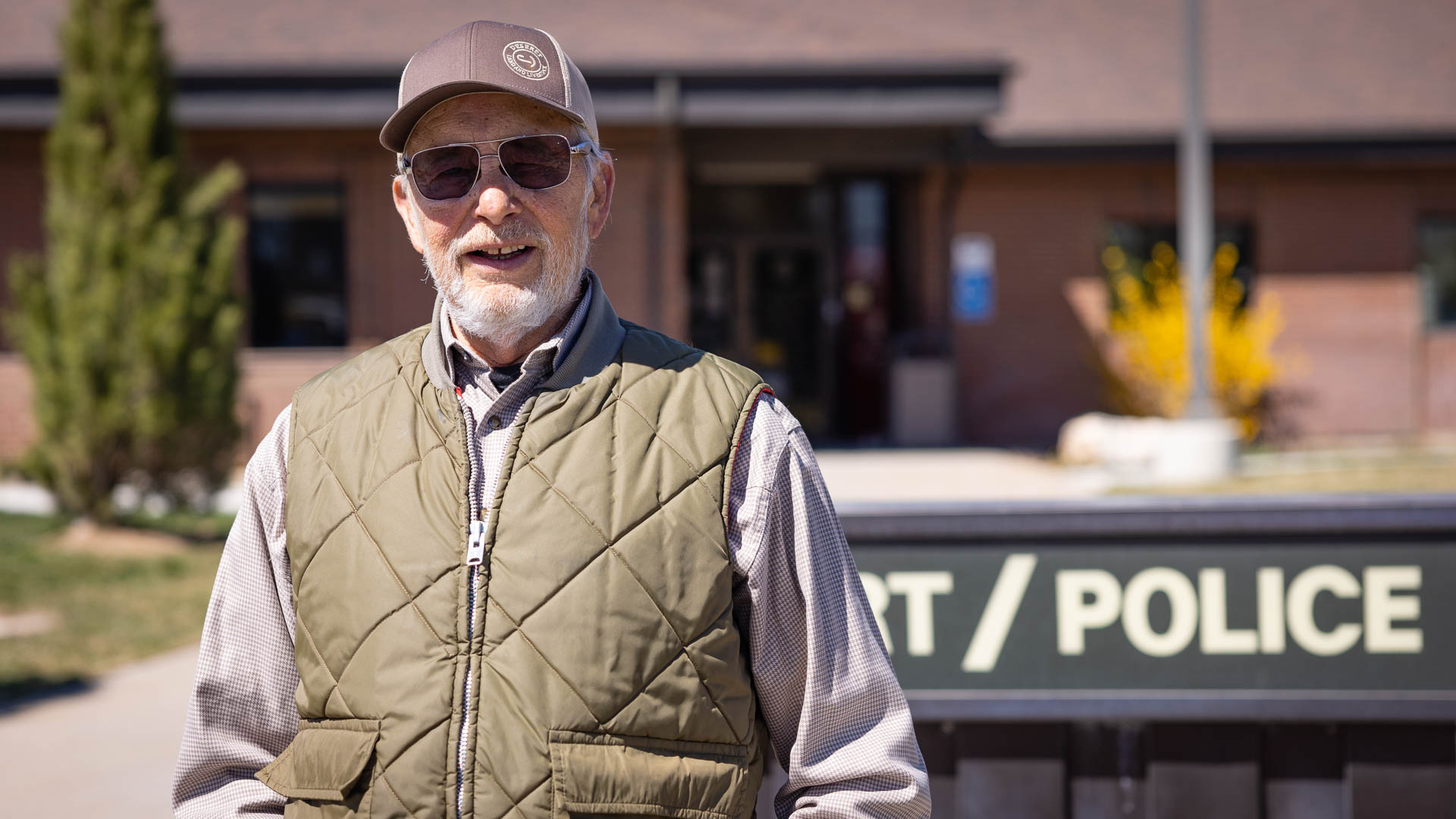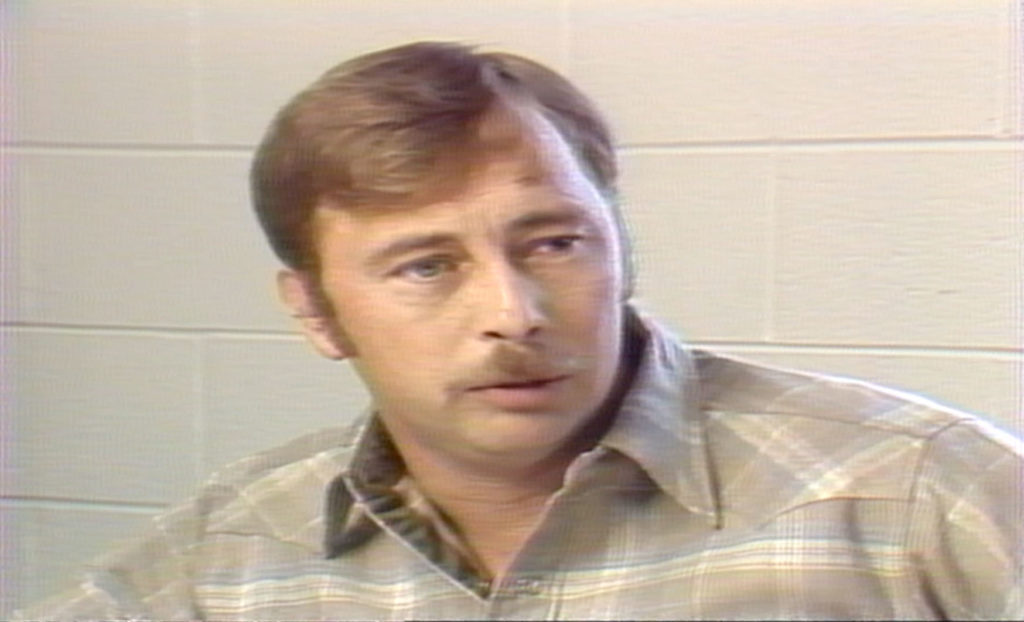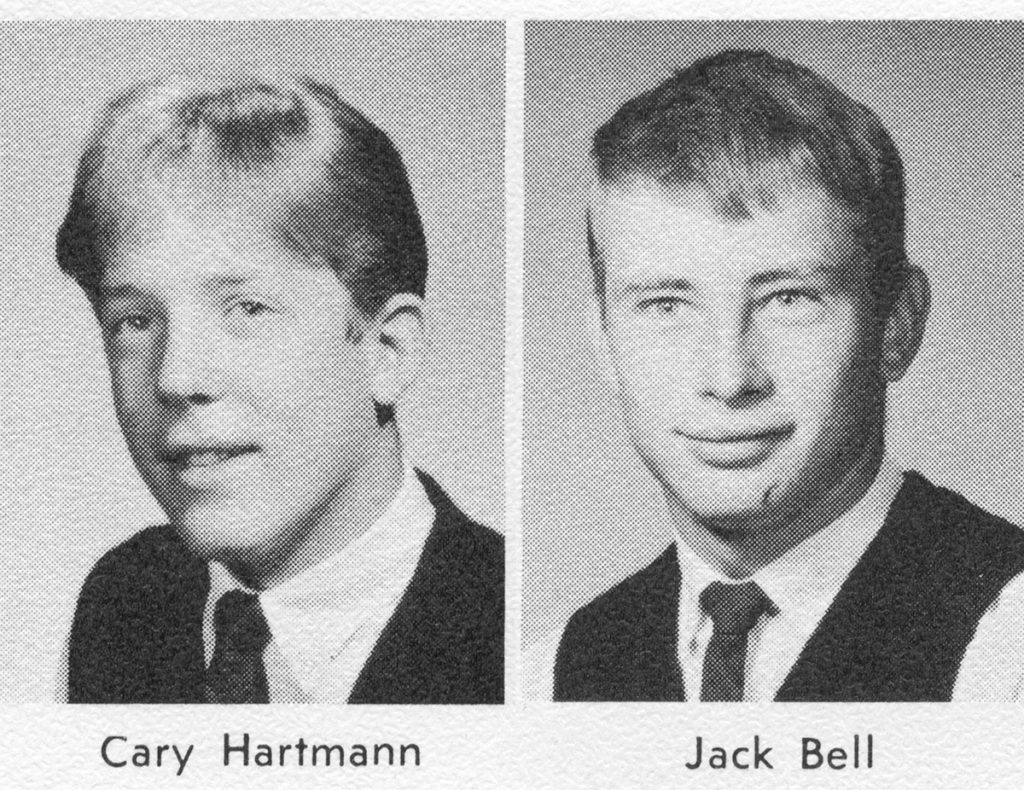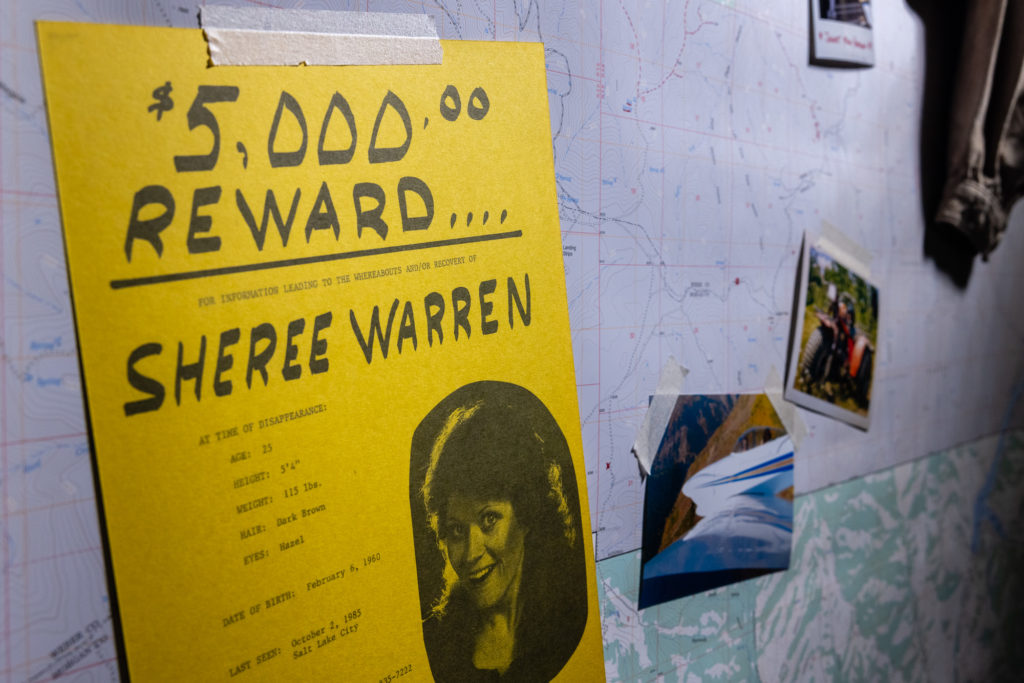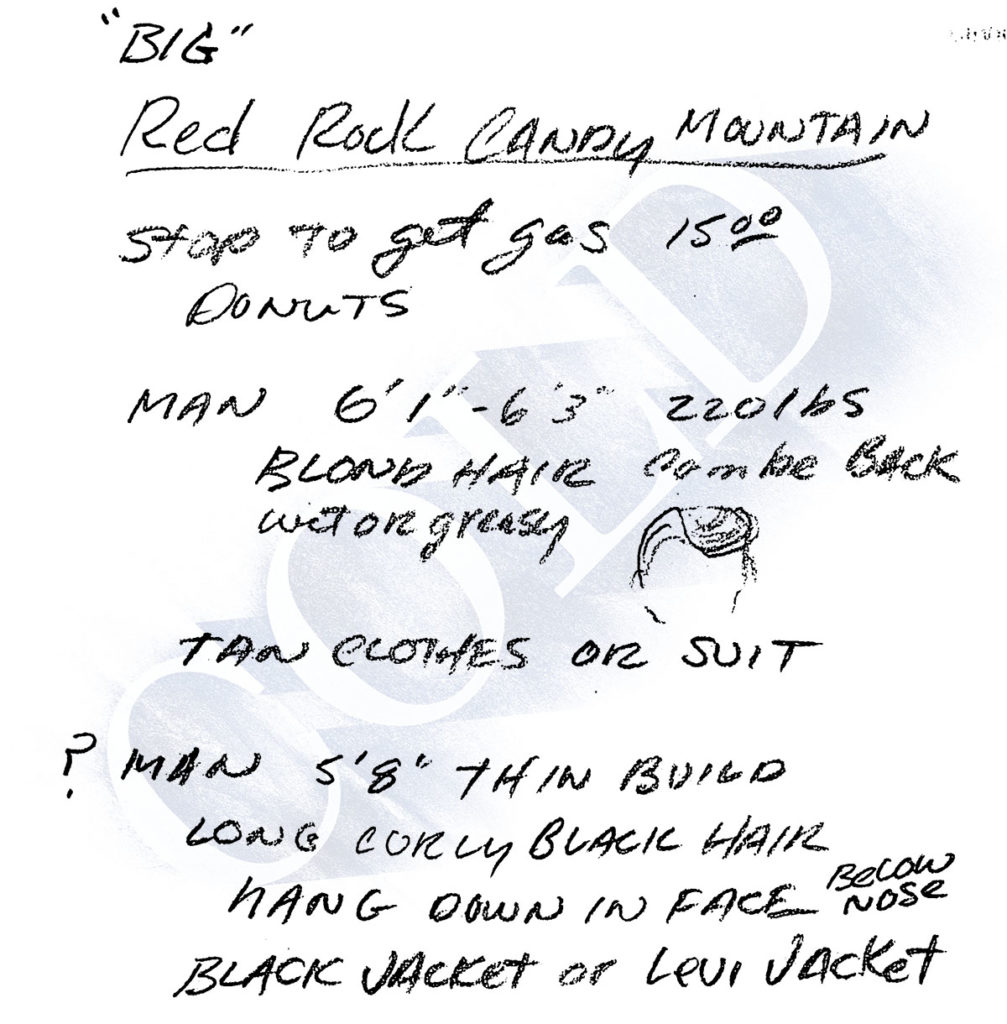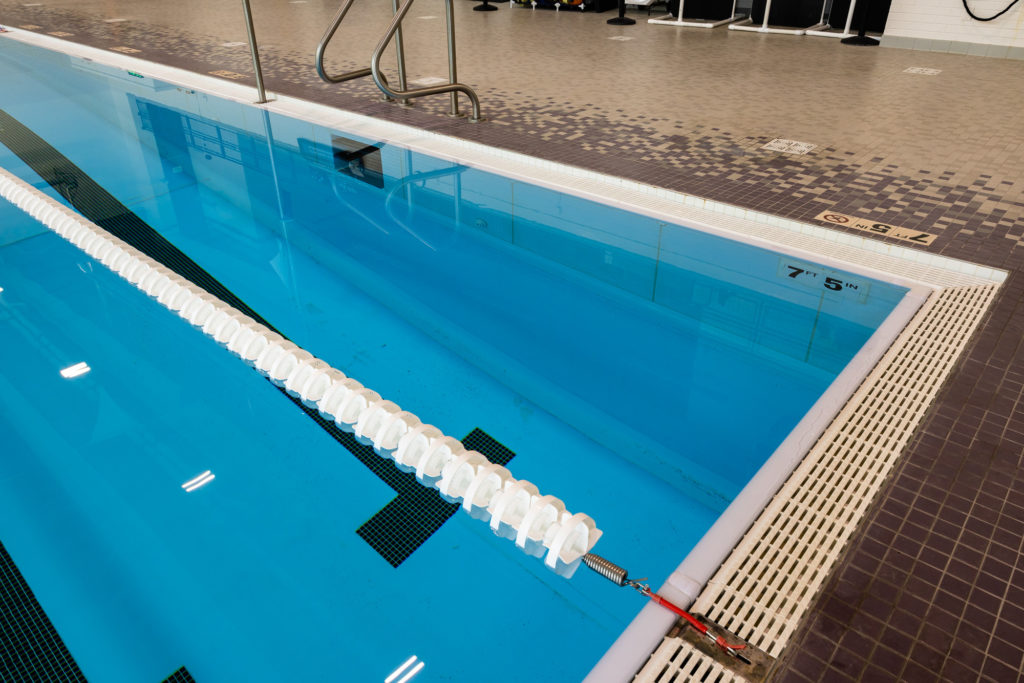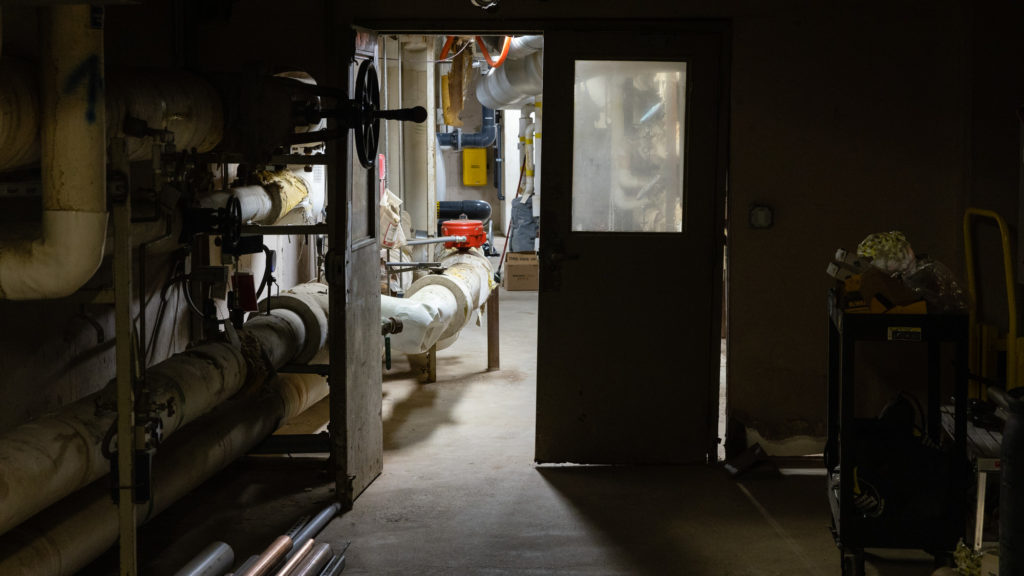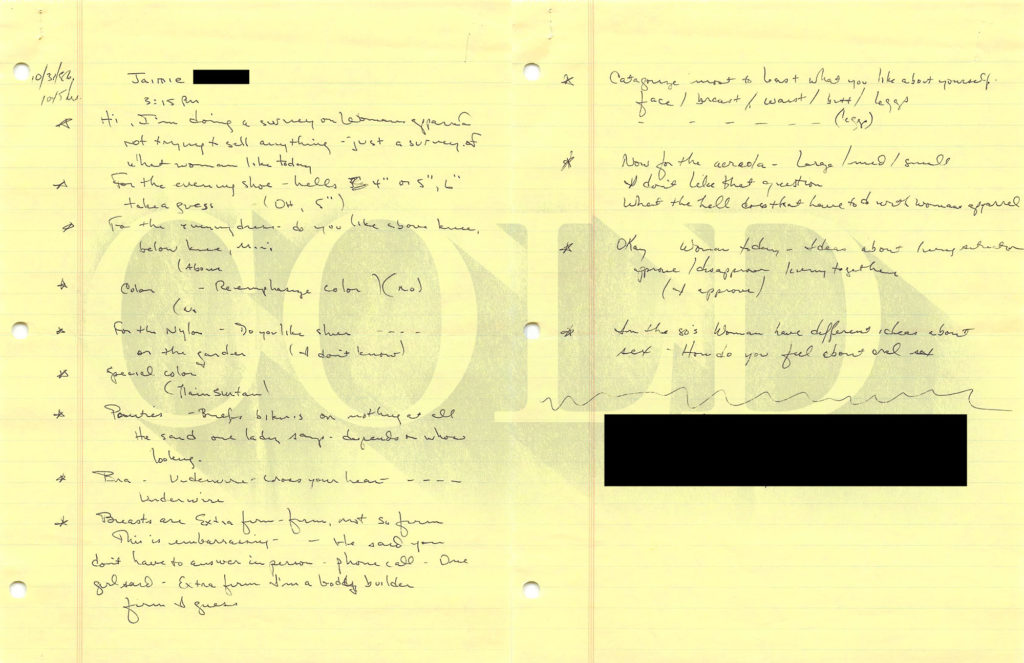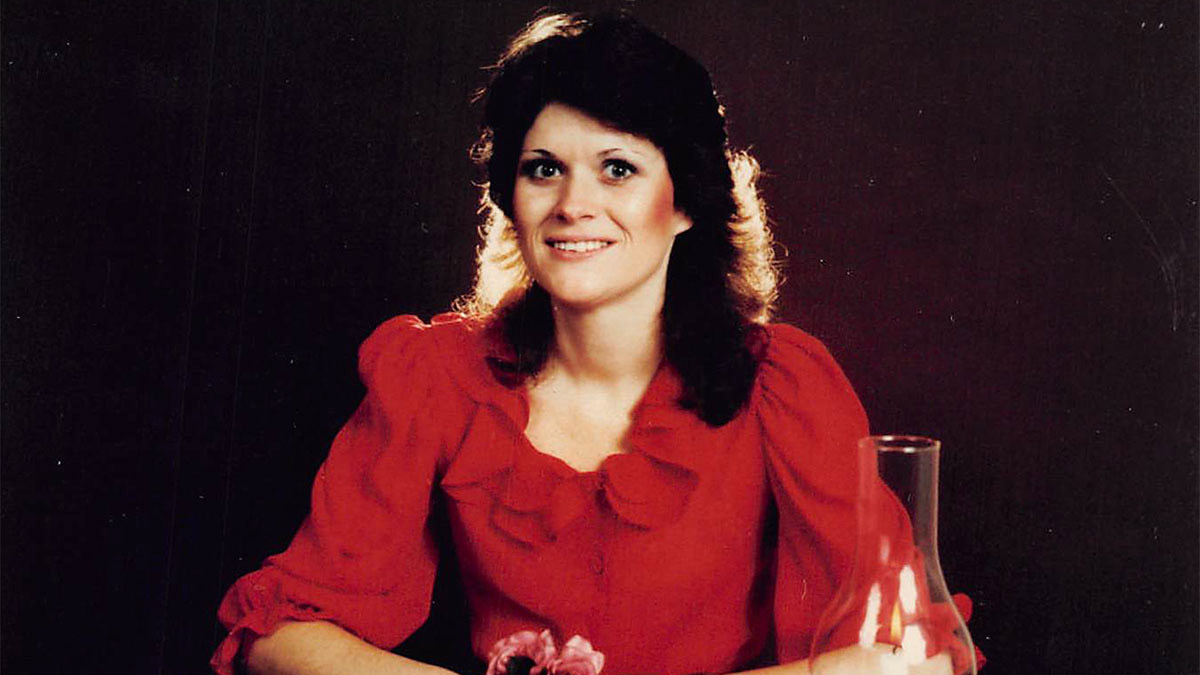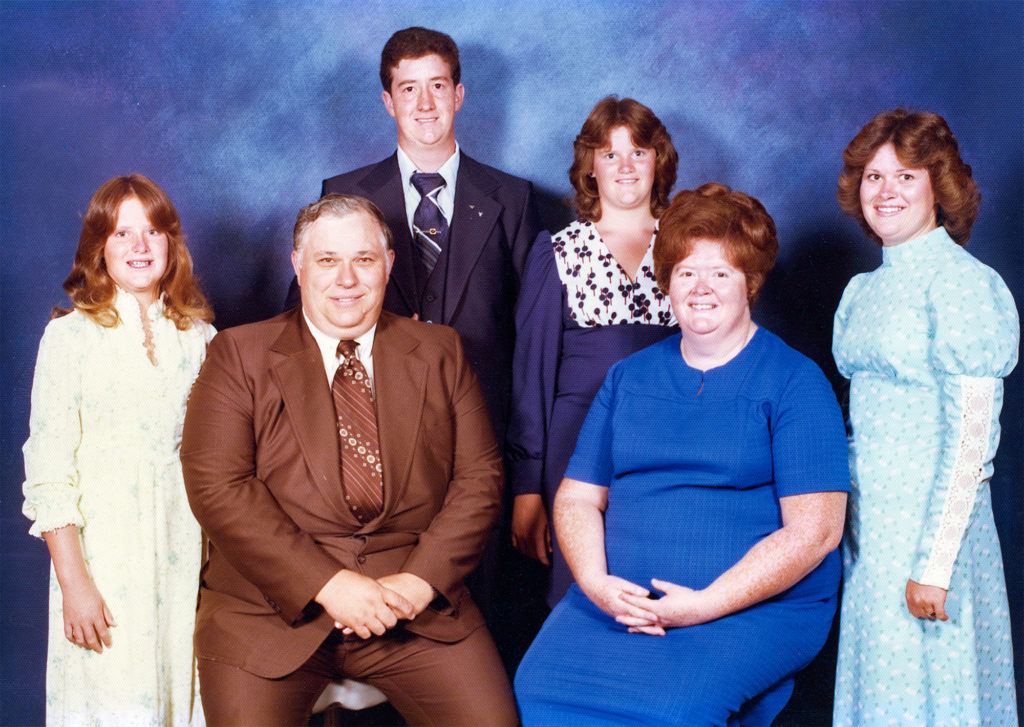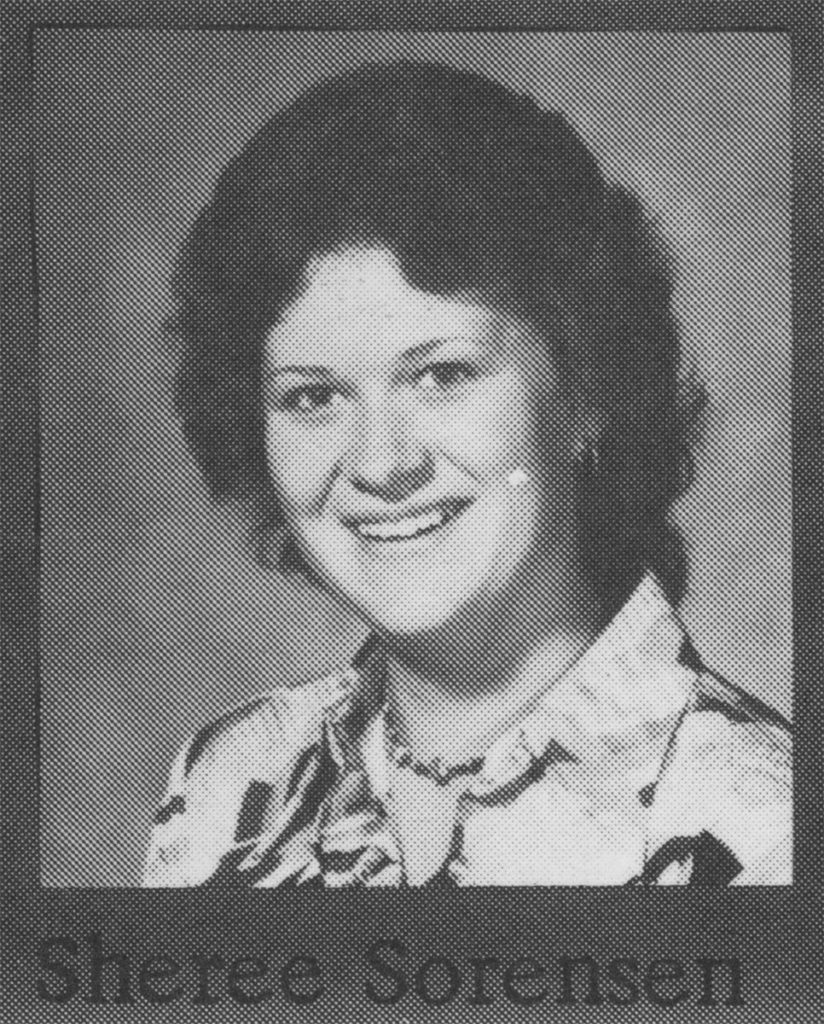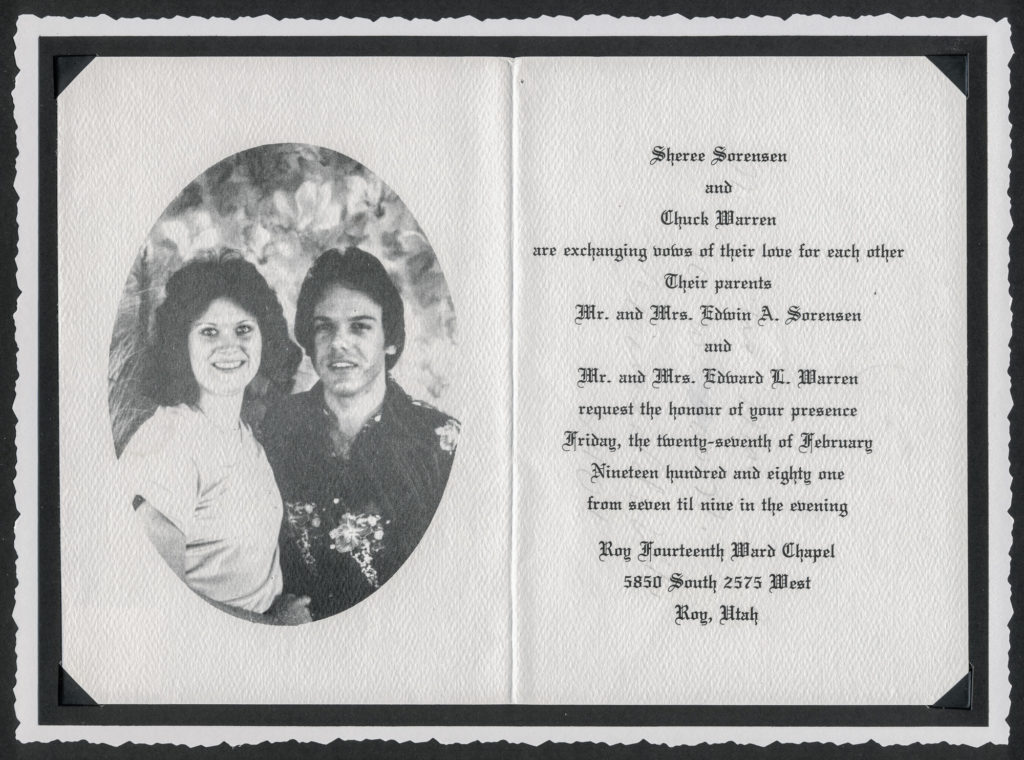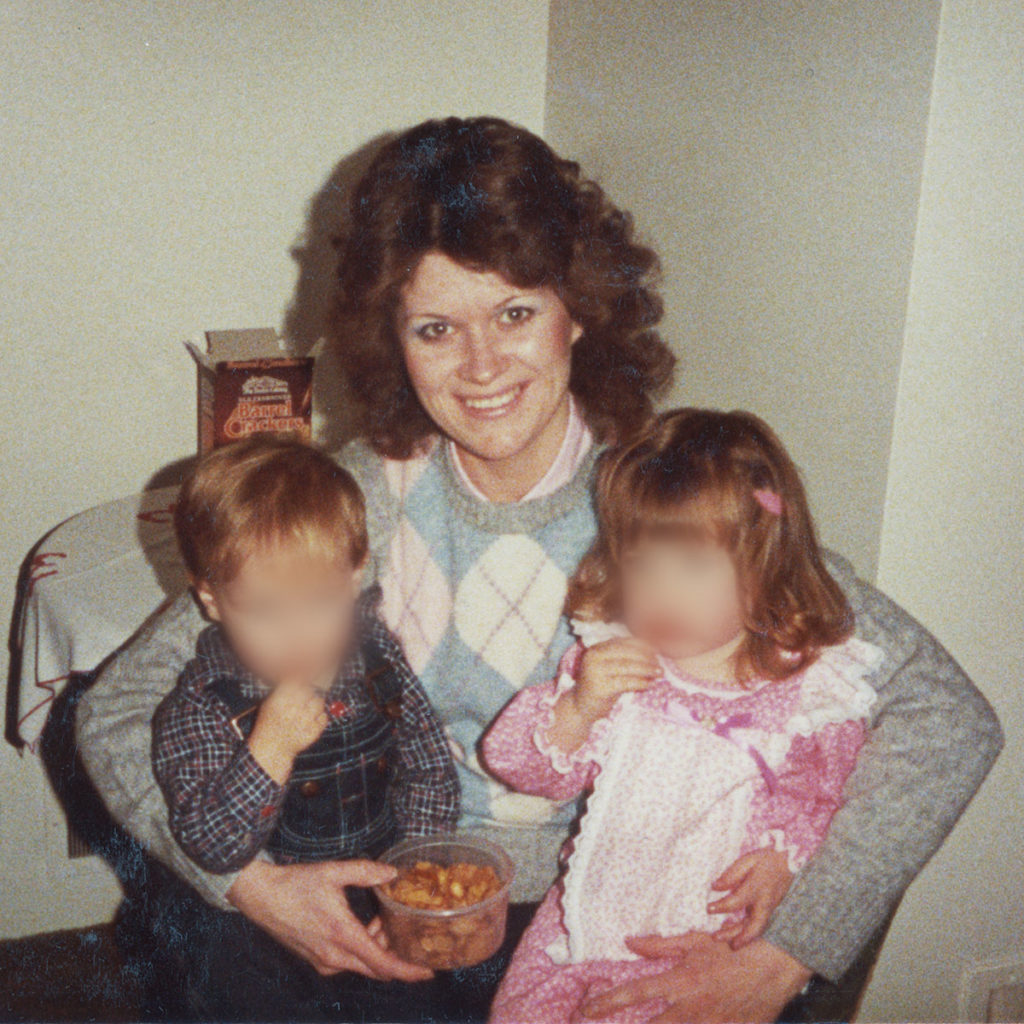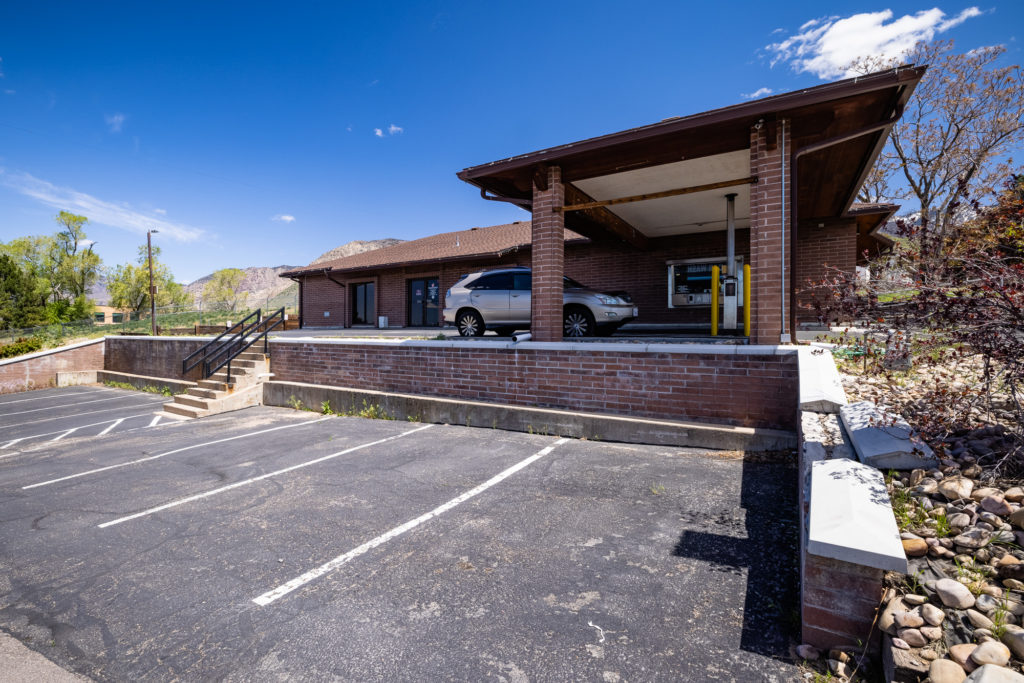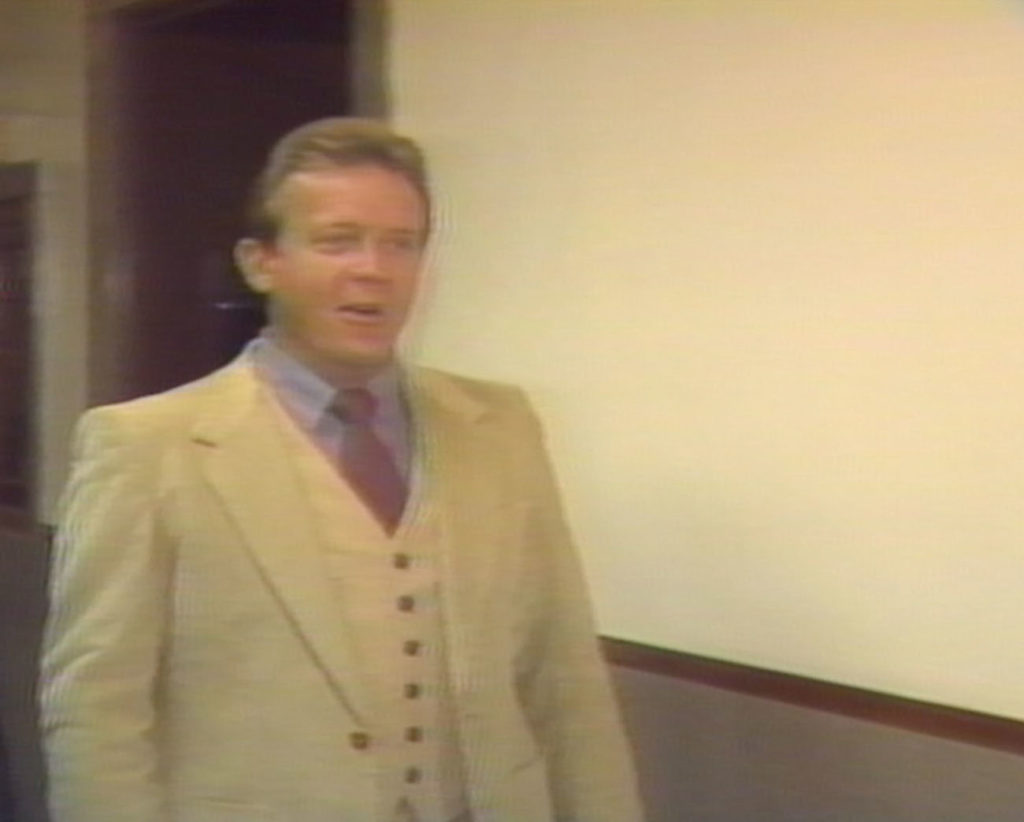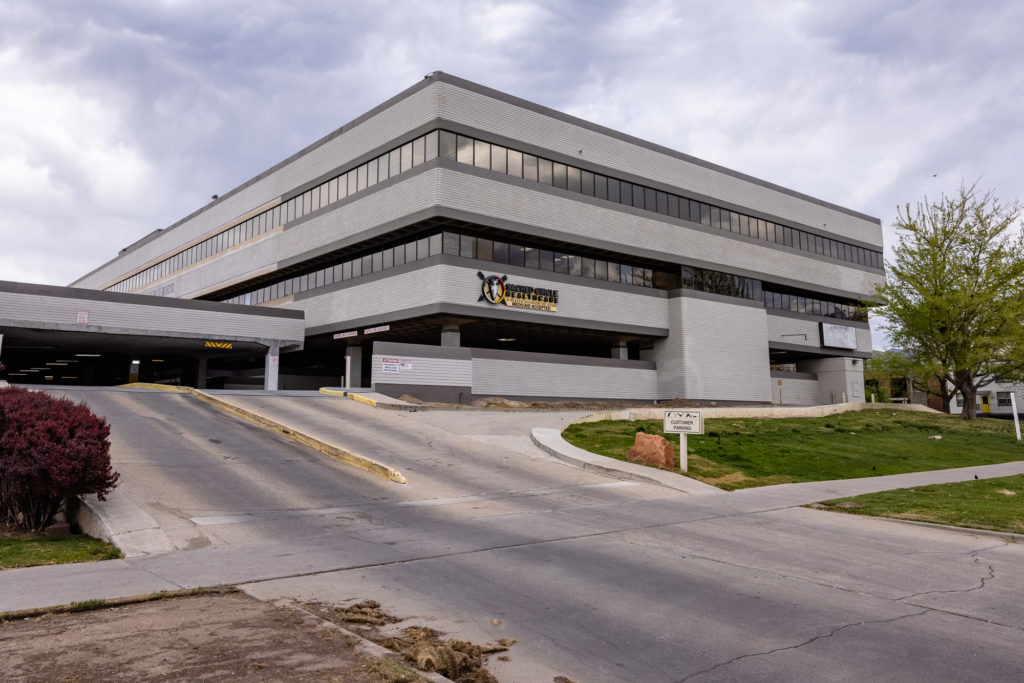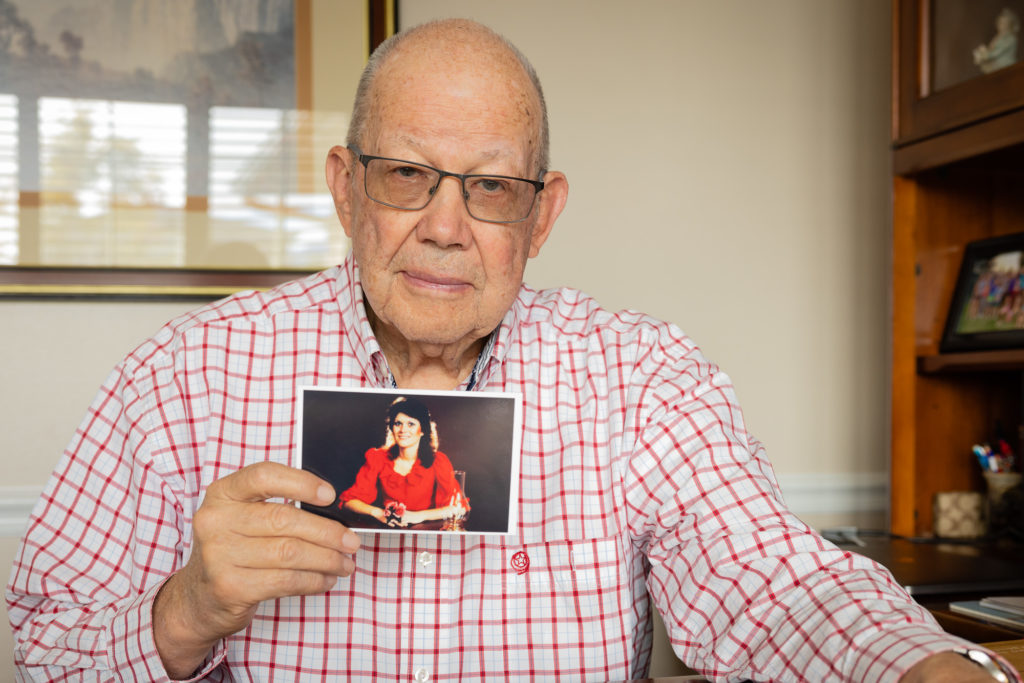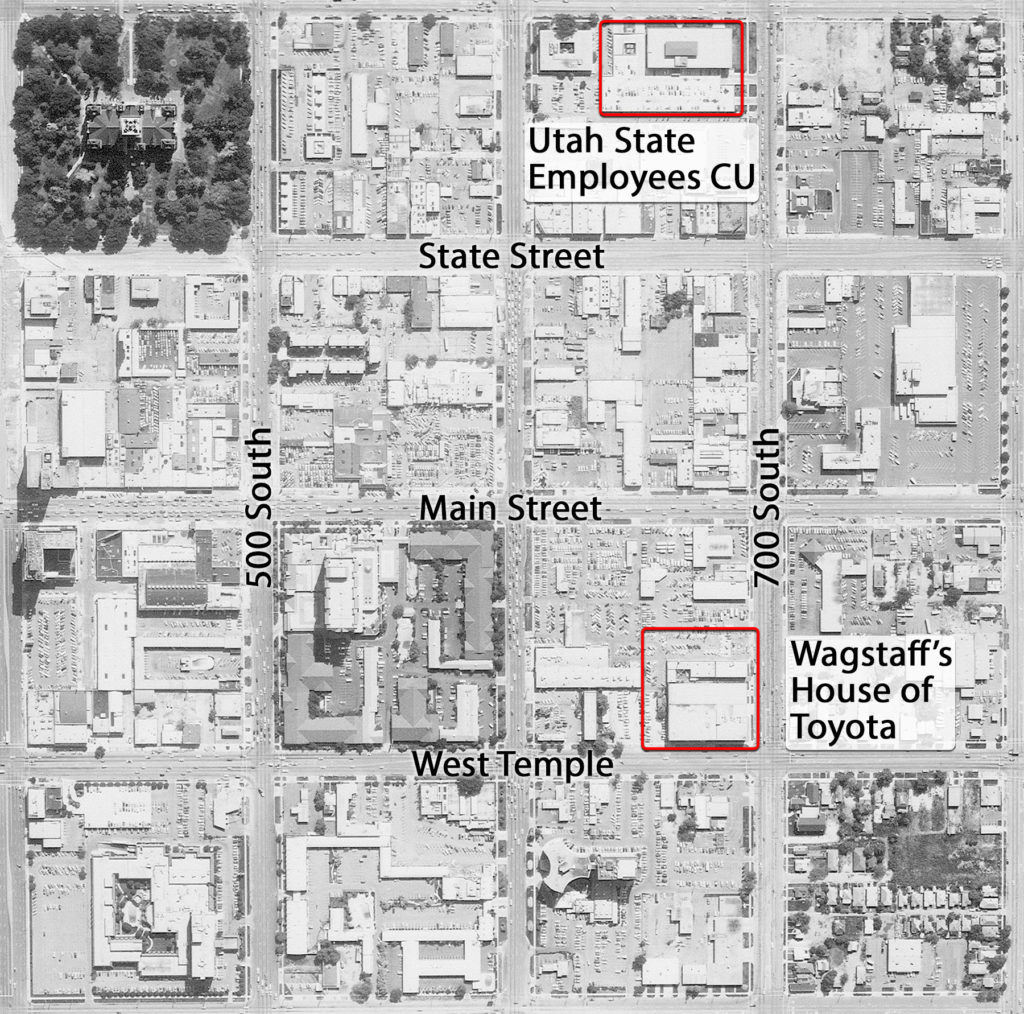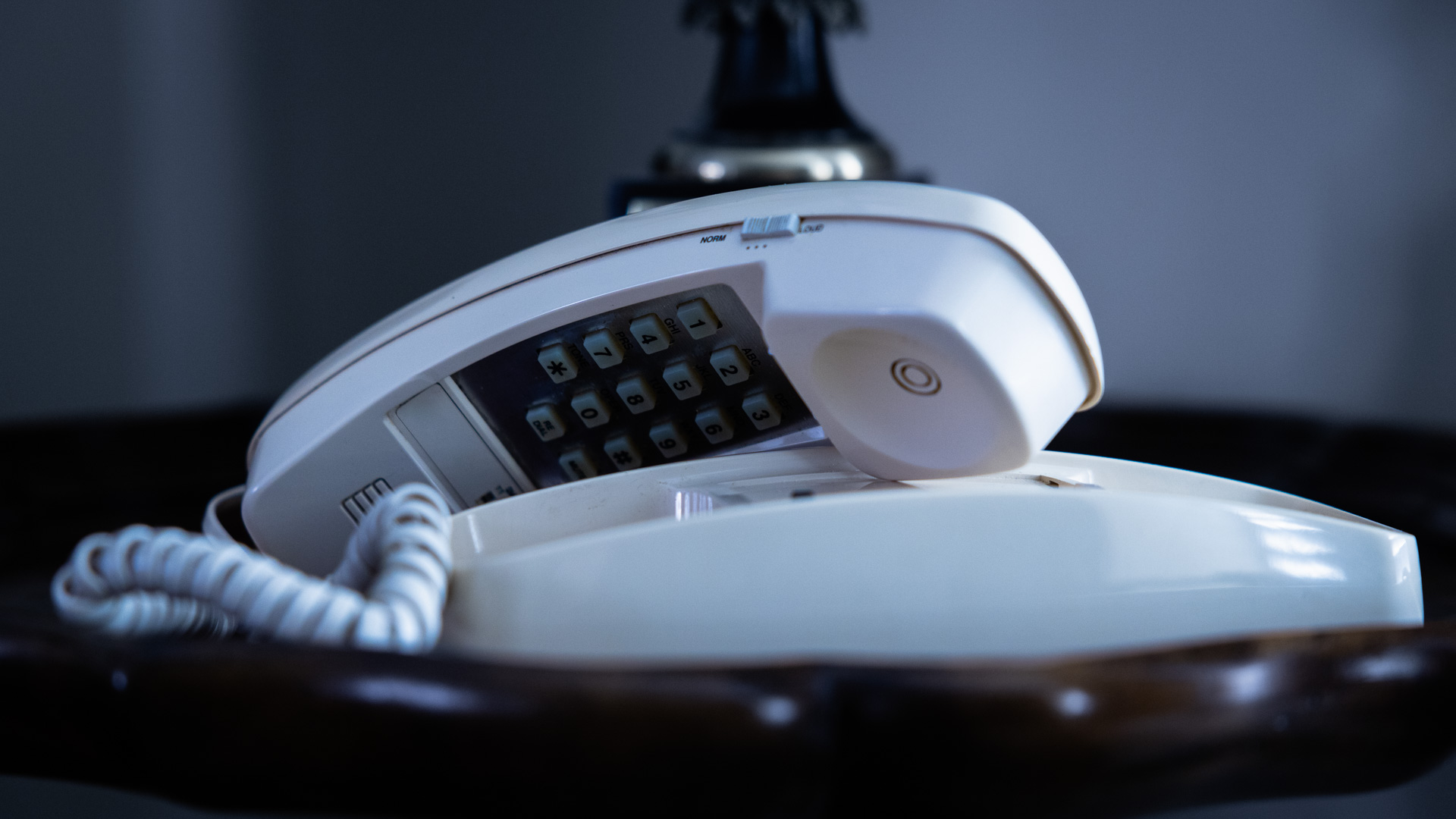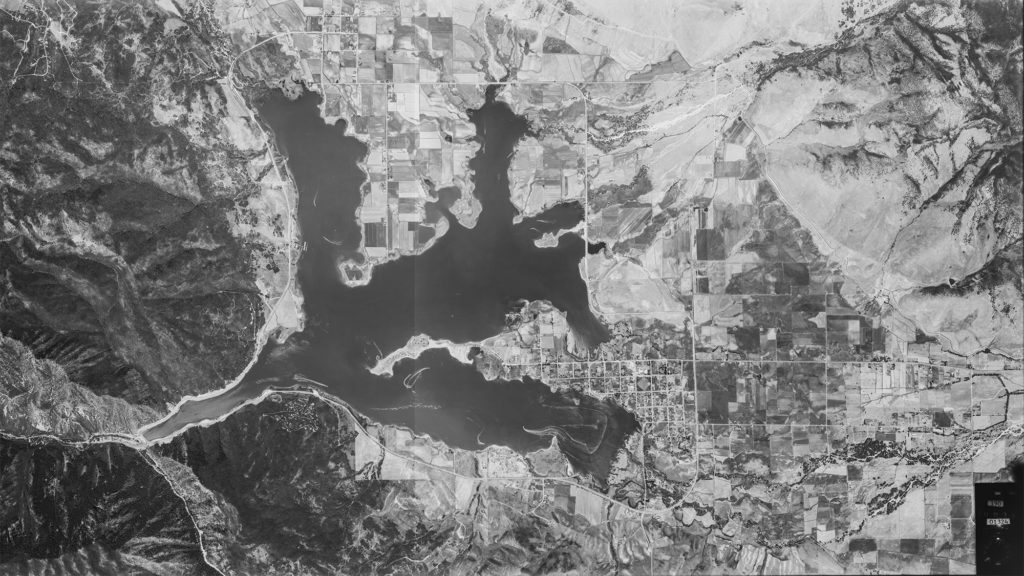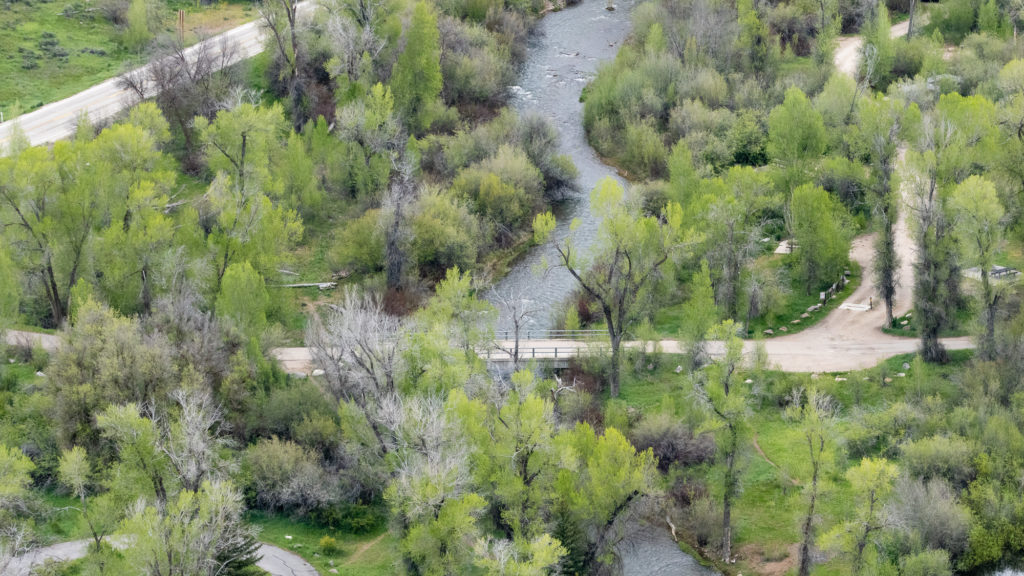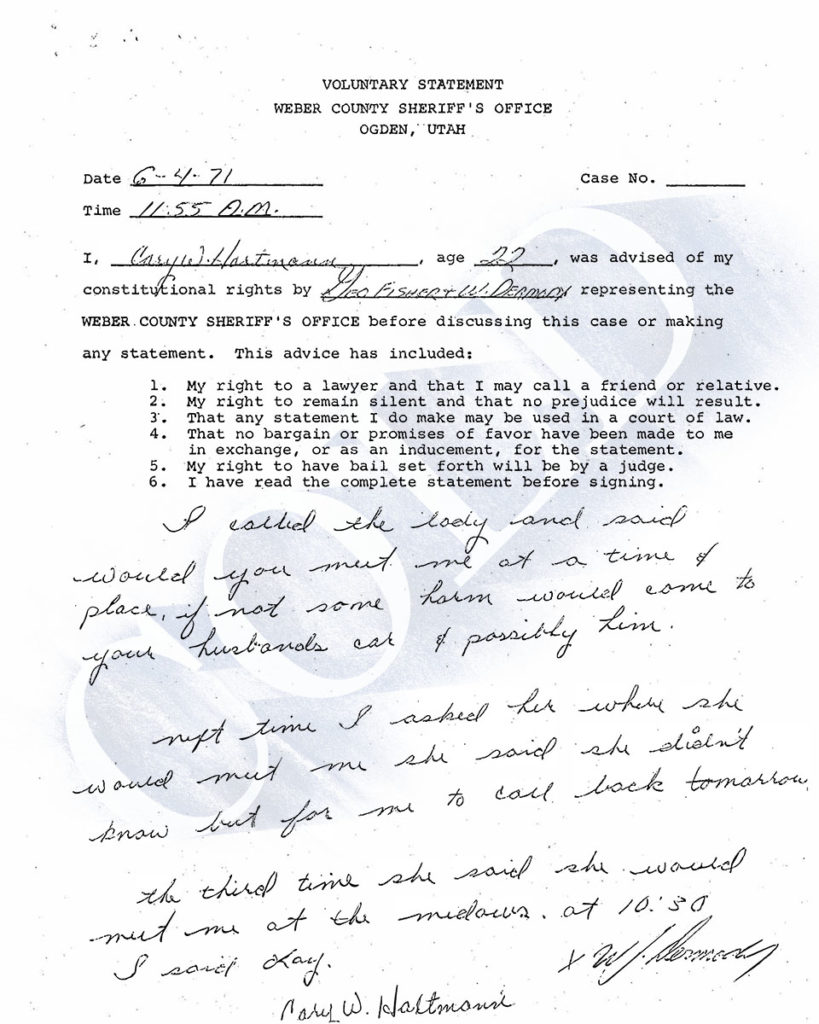(Sound of tape recorder starting)
John Greene (as Cary Hartmann from November 25, 1985 statement): It’s now November 25th, 1985 at 8 p.m. This is the case of Sheree Warren, she disappeared from Salt Lake City October 2nd, 1985 approximately 6:30 p.m., from the Utah Employees Credit Union.
Dave Cawley: Nearly two months had passed since the disappearance of Sheree Warren. Her boyfriend, Cary Hartmann, sat down with a tape recorder.
John Greene (as Cary Hartmann from November 25, 1985 statement): This is all the information I can possibly remember. If I don’t get it all today I’ll put it together piece-by-piece, there’s so much that’s happened for almost 8 weeks now. Kinda hard to remember every bit of it.
Dave Cawley: Cary recorded the tape for a guy named Michael Neumeyer, a private investigator. I’ve not been able to find the original but Neumeyer made a transcript of it. So you’re hearing Cary’s words, read by a voice actor.
John Greene (as Cary Hartmann from November 25, 1985 statement): Mike, to be quite frank with you, I don’t see anything short of a miracle, other than turning up possibly the remains if that’s the case, or her walking in the door.
Dave Cawley: Again, Cary recorded this for a P.I., not Roy police detective Jack Bell.
Jack Bell: Not sure why Cary did that.
Dave Cawley: Jack never received the tape. Like me, he’s only ever seen the 16-page, spiral bound transcript.
Jack Bell: Cary brought it in and it was in a, book form. It was all typed up. One of those that you can bind yourself. Neumeyer’s a terrible speller.
Dave Cawley: Michael Neumeyer had a lot in common with Cary Hartmann. Neymeyer’d served in the Navy and, after getting out, had taken a job with the Ogden Police Department.
Jack Bell: But he didn’t last too long and he come out here to Roy and he didn’t last too long here, either. So he started his own, I’m private detective business or whatever.
Dave Cawley: Cary had met Neumeyer at the NICE Corporation call center where they were both moonlighting in the fall of ’85. They became fast friends and the topic of Sheree came up in conversation. Neumeyer told Cary he’d worked a homicide case in the past. He volunteered to look into Sheree’s disappearance. Cary made handwritten notes about this conversation, and I have copies. They say “Newmire, private dick sort of, wants to help, all details needed, has some good leads, wants to remain underground for now.” So that’s why Cary recorded the tape, to tell his version of the story to Michael Neumeyer.
John Greene (as Cary Hartmann from November 25, 1985 statement): Mike, I’ve put together everything that I can think of up to date. … It’s just my opinion and I’m just giving you what you asked for as much information as I could.
Dave Cawley: Cary offered few solid details about his relationship with Sheree. He didn’t say how they’d met or talk about any of her interests or aspirations. He described himself simply as her “lover.”
John Greene (as Cary Hartmann from November 25, 1985 statement): I took her into my folks home and down to my sister’s place in Salt Lake. Pretty soon she was a member of the family. Before anyone knew it, she was carrying the conversation and doing the dishes. A very exceptional young woman.
Dave Cawley: A man falling in love with a woman after she cleans his dishes. Where have I heard that before? A moment ago I mentioned Cary’s notes about Sheree’s disappearance. There’s another page where he wrote down the titles of two songs. The first was “Cherish” by Kool & the Gang. Its chorus repeats the lines: “cherish the love we have. We should cherish the life we live.”
John Greene (as Cary Hartmann from November 25, 1985 statement): Now, this is the kind of lady that would come home after work. She’d be lying here on the couch in my bathrobe with some candles around the room, the music on and a drink waiting. She was a very affectionate, giving, generous, wonderful lady.
Jack Bell: Y’know, at the time he was madly in love, supposedly, and she’d wait for him to get home from work and have candles lit and wine poured and all this hoopla, bull[expletive], but (laughs) if she had some problems there with Cary, I hadn’t found anybody that she had shared ‘em with, y’know?
Dave Cawley: The second song, “Come Back and Stay” by Paul Young, includes the lyrics: “since you’ve been gone, opened my eyes and I realize what we had together. Will you ever return?”
John Greene (as Cary Hartmann from November 25, 1985 statement): I know at the time that I was going with Sheree, there was no one else in her life. She was very satisfied and extremely happy. I say that because of our relationship, was exceptional.
Dave Cawley: This is Cold, season 3, episode 3: Cherish the Love. From KSL Podcasts, I’m Dave Cawley.
[Ad break]
Dave Cawley: Cary Hartmann’s statement to private investigator Michael Neumeyer included a new version of his account of the night Sheree Warren disappeared.
John Greene (as Cary Hartmann from November 25, 1985 statement): I was at my home which is at 690 7th, Ogden, Utah. The phone rang, it was 4:30 PM.
Dave Cawley: Cary said he’d stopped by his apartment after finishing work at Weber State College for the day, before heading to his second job.
John Greene (as Cary Hartmann from November 25, 1985 statement): It was Sheree. The conversation went something like this: she said ‘what are you going to do after work?’ I work part time out at NICE Corporation. I said “well I’m going to meet Dave Moore.”
Dave Cawley: Cary and Dave were friends. They’d served together in the Ogden Police reserve corp. Cary called Dave his “best friend.” He said he’d told Sheree he and Dave planned to rendezvous at a bar called Sebastians, next to the sewing machine repair shop Dave owned, at around 9 p.m. They’d have two drinks, then call it quits.
John Greene (as Cary Hartmann from November 25, 1985 statement): She was kind of joking, “oh, I guess that will be about 4 in the morning.” I said no. I said “I’m going to have two drinks and I’s coming right home.” At this point and time, that little lady meant everything in the entire world to me. Drinking all night with the boys just wasn’t what it was cracked up to be and when I said two drinks and I was coming home, that’s what I meant. She said “that’s wonderful.” She said “I’ll be waiting for you at home.” And that’s the last word I ever heard from her.
Dave Cawley: Cary said he’d run a little late getting to Sebastians that night, arriving just after 9. He said Dave More was already there, waiting for him.
John Greene (as Cary Hartmann from November 25, 1985 statement): We talked, had a couple of drinks. I decided at that time it would be a lot nicer to have Sheree down there. I called her at my home, no answer. … When the phone rang and she didn’t answer, I knew at that moment something was wrong. I called Sheree’s mother’s house. This was approximately 10, 10:30ish. She said “she’s not here, isn’t she with you?” That confirmed that I knew at that moment something was wrong and drastically wrong. That’s how well I know the lady.
Dave Cawley: Dave Moore told us in the last episode he remembered going to the bar with Cary at 6, not 9. So again, Cary’s story here is out of sync. And it’s not just off from what Dave said, it doesn’t line up with what Cary’d himself told detective Jack Bell the day after Sheree disappeared. Back then, he’d said he found out Sheree was missing the next morning, from Sheree’s mom. But Sheree’s mom, Mary Sorensen, told police she’d received two calls from Cary the night of. So here in this statement, Cary shifted his story to bring it into alignment with Mary’s.
John Greene (as Cary Hartmann from November 25, 1985 statement): I keep calling. I called all night. I came home approximately 10:30, 11, called her mom, called girlfriends. Nothing.
Dave Cawley: Sheree’d told her mom on the day of her disappearance she’d planned to pick up her son from her estranged husband Chuck after work. She’d then intended to bring her son home and have dinner at her parents’ house. But in this version of Cary’s story, he said Sheree had instead planned to meet up with him, leaving her son with Chuck that night, through the following day.
John Greene (as Cary Hartmann from November 25, 1985 statement): What they do is Chuck has privileges as far as his son goes on Wednesdays and Thursdays, works out real well for her, picks him up on Wednesday and delivers him Thursday night.
Dave Cawley: Sheree was supposed to be at work early the next morning 40 miles south of home, in Salt Lake City.
John Greene (as Cary Hartmann from November 25, 1985 statement): Even if our relationship wasn’t good — and it was absolutely excellent — she had a brand new job, a big promotion. She would not leave her son and just take off.
Dave Cawley: Ditching her son to stay out late on a weeknight with Cary, potentially blowing her new promotion, would’ve been out of character for Sheree.
John Greene (as Cary Hartmann from November 25, 1985 statement): This is not the type of lady that would not show up. If she was going to be a minute late, she would call. If she was going to be a half-minute late, she would call.
Dave Cawley: Cary said after calling Sheree’s mom, he’d dialed Roy City police dispatch to report her missing.
John Greene (as Cary Hartmann from November 25, 1985 statement): Dispatch then gave the report to, I believe, Jack Bell who now has the case. Obviously, because of the circumstances, there was no incriminating evidence of foul play to date.
Jack Bell: I didn’t put my finger on it right away, but later on, I felt like he hand-picked me to report it to because, ‘cause he knew me.
Dave Cawley: Jack now believes, in retrospect, Cary’d pushed him toward possible persons of interest.
Jack Bell: He uh, pushed away from himself whichever which way.
Dave Cawley: They included a credit union patron…
John Greene (as Cary Hartmann from November 25, 1985 statement): There is a man who came into the credit union and asked Sheree for a date. She went and had a drink with him at Sebatians. He’s a real weirdo. He bugged her a lot. Called her, wouldn’t leave her alone.
Dave Cawley: …as well as a guy Sheree had briefly dated after separating from her husband, before dating Cary.
John Greene (as Cary Hartmann from November 25, 1985 statement): I know this guy was involved in some drugs. To what extent, I don’t know. I know it was strong enough and often enough that it turned Sheree off and she told him to hit the road.
Dave Cawley: But Cary took a more pointed approach in talking about the last man known to have seen Sheree alive.
John Greene (as Cary Hartmann from November 25, 1985 statement): I think we need to look at this Richard Moss.
Dave Cawley: You heard from Richard Moss in the last episode. He was the branch manager Sheree had been training on the credit union’s computer system.
John Greene (as Cary Hartmann from November 25, 1985 statement): Well, Mr. Richard Moss of Richfield was working with Sheree those two day periods. She worked close enough with this guy, she went to lunch with him … They did go in Mr. Richard Moss’ car the first day. Now, this is a point that I must bring up. When asked, Richard Moss said “well, Sheree was driving a maroon 1984 Toyota.” … Point being, no one in that entire credit union knew what type of car she was driving … None of us knew but yet this Richard Moss knew all of a sudden. How did he know that when they went to lunch in Mr. Moss’ car? Kinda strange.
Dave Cawley: Cary was well aware his old high school acquaintance Jack Bell had already interviewed Richard Moss over the phone.
John Greene (as Cary Hartmann from November 25, 1985 statement): Richard Moss told detective Jack Bell, other people, Sheree told him “see you tomorrow, I’m going to Wagstaff, pick up my husband, he needs to get his car repaired and give him a ride home.” Now, why would she say that if Chuck got through to her with a phone call and canceled the appointment?
Dave Cawley: Why indeed?
Jack Bell: Unless she was just trying to brush him off — which is possible, I don’t know.
John Greene (as Cary Hartmann from November 25, 1985 statement): This is one of the strange things that old Chuck has pulled.
Jack Bell: But Cary did everything he could do to promote Chuck Warren as being the guilty party in her disappearance.
John Greene (as Cary Hartmann from November 25, 1985 statement): Even if the guy didn’t do it, I pray to God he didn’t do it.
Dave Cawley: Jack had seen Chuck Warren as his prime suspect since the beginning, thanks in part to information provided by Cary. Cary used innuendo…
John Greene (as Cary Hartmann from November 25, 1985 statement): They were having some problems … with agreeing on a child support … court decided, I believe, that it would be $252. That’s based on Chuck’s earnings per year. Of course, he makes pretty good money.
Dave Cawley: …and Cary used hearsay…
John Greene (as Cary Hartmann from November 25, 1985 statement): Seems a bit strange Chuck would drive an ’84, $13,000 Supra to Wagstaff Toyota on the whim of getting it repaired and no one ever seeing either of them. Seems very strange.
Dave Cawley: …so Cary could paint a picture using a palette of circumstantial colors.
John Greene (as Cary Hartmann from November 25, 1985 statement): Oh, and by the way, as of this moment that ’84 Supra is on a lot … for sale. Chuck’s pleading, the poor boy, the poor situation, ‘I can’t afford this, I can’t afford that.’ I know for a fact the man just took out a 22 or 23-thousand dollar second mortgage on his home. He did pay off that Supra.
Dave Cawley: Cary said a dispute over child support had stalled Sheree’s divorce.
John Greene (as Cary Hartmann from November 25, 1985 statement): For some reason, Chuck come up with a figure of $181 and was paying that fairly regularly to Sheree at the point she disappeared. He did owe her $500. … She had him served again to try and straighten out this money matter. The man is very, very, very money-hungry. He’s a money person. That’s all he thinks about, supposedly.
Dave Cawley: By Cary’s account, money served as motive for Chuck Warren to kill Sheree.
John Greene (as Cary Hartmann from November 25, 1985 statement): According to Sheree — and I believe her, if she said the sun wasn’t going to come up, I take bets … Chuck came into the credit union maybe a week or maybe two weeks before she disappeared. The credit union had members as well as staff. He told her, in so many words — I believe they were very pointed words — “I’m going to kill you. I will get even for you for this.”
Dave Cawley: We’ve heard this story a couple of times now, from Cary, from Sheree’s friend Pam Volk and from the last person known to have seen Sheree alive, Richard Moss. But this retelling of Cary’s version included a new detail.
John Greene (as Cary Hartmann from November 25, 1985 statement): He flashed a gun, at least at Sheree. I blame this on her: she didn’t report it, to the police. Any of this. I tried to get her to. She wouldn’t do it. She wanted to keep things status quo.
Dave Cawley: Again, Cary’d told this story to detective Jack Bell about a week after Sheree disappeared. But there’s no mention of a gun in Jack’s notes of that conversation.
Jack Bell: Now, that wasn’t told to me.
Dave Cawley (to Jack Bell): Ok.
Jack Bell: That about Chuck comin’ in with a gun in his waistband. That was told to Mike Neumeyer. And, pshh, there’s another character.
Dave Cawley: Jack’s notes show Sheree’s boss confirmed Chuck and Sheree had been in some sort of confrontation at the credit union branch in Ogden a week or so before Sheree disappeared. So Cary’s story contained at least a kernel of truth. But I’ve talked to Sheree’s former boss myself. She didn’t remember seeing or hearing about a gun.
John Greene (as Cary Hartmann from November 25, 1985 statement): I was told by … ladies that work at the credit union with Sheree … they said that Chuck was very volatile. He was there, pleasant to talk to but yet he would explode upon getting irritated, mad. Strange personality. Done a lot of strange things.
Dave Cawley: Chuck Warren flashing a gun in a crowded credit union would’ve been more than strange. Any teller who saw it would’ve likely hit the hold-up alarm. But maybe Sheree’s the only person who saw it, and maybe Cary’s the only person with whom she shared that detail. Or maybe, Cary decided to embellish the story to push more suspicion onto Chuck Warren.
John Greene (as Cary Hartmann from November 25, 1985 statement): My own opinion, I think Chuck knows something about it. Involved, to what degree? I can’t say. I think he knows something about it, definitely.
Dave Cawley: Cary’s statement was a master class in the not-so-subtle art of casting aspersions.
John Greene (as Cary Hartmann from November 25, 1985 statement): Chuck took off work, supposedly depressed and ill, the day after Sheree was missing. Supposedly went home, put all his vehicles in his garage, walked to the Ogden City Mall. … That computes to be a 60-block round-trip. That’s one heck of a walk. … This man is not a physical specimen. He’s not a jogger. He’s not an athlete. He’s not an average skier. Runner he’s not. This is completely out of character for him, this man.
Dave Cawley: The only positive thing Cary had to say about Chuck involved his signing the paperwork that allowed police to search Sheree’s car after it’d turned up in Las Vegas.
John Greene (as Cary Hartmann from November 25, 1985 statement): The only thing Chuck has done to date as to lend a hand whatsoever, he did sign a consent search. We were hoping we’d find something incriminating in the car. That was not the case.
Dave Cawley: Cary summarized what Las Vegas Metro Police had found in the car. He mentioned the fingerprints they’d lifted from driver door window.
John Greene (as Cary Hartmann from November 25, 1985 statement): They haven’t confirmed whatsoever whose prints they are. … Hopefully, Las Vegas will send prints up to us. We’ll be able to make a match up of those.
Dave Cawley: Cary used words like “us” and “we,” as if he was himself a police detective working the case. He’d clearly learned about the details of the car from detective Jack Bell. But Jack was beginning to regret how open he’d been in sharing information with Cary.
Jack Bell: To me it was more Cary’s manipulations. More of the same thing about hand-picking me to take the original report from him, because we knew each other in high school, basically.
Dave Cawley: Cary said he’d at first thought Sheree’s car might surface in the mountains east of Ogden.
John Greene (as Cary Hartmann from November 25, 1985 statement): We were kinda of the opinion, Jack Bell and myself, that the car was dumped in the Causey, Pineview, Lost Creek — somewhere deep, something you can get a car into quickly.
Jack Bell: You got two reservoirs up there that are deep: Causey and Lost Creek on the other side.
Dave Cawley: The name “Causey” might sound familiar. It came up a couple of times in episode one. Causey Reservoir sits near the campground where Cary Hartmann tried to lure Heidi Posnien at the start of our story. And Causey’s near where Cary’s friend Brent Morgan, the taxidermist, had his wedding a year before Sheree disappeared. So Cary knew the Causey area well. But where is Causey in relation to Lost Creek Reservoir? Picture a percent sign, like on a keyboard: a small circle in the upper left, a diagonal slash and another circle in the bottom right. The top left circle would be Causey. The bottom right circle, Lost Creek. The slash between them is a mountain. In his statement to private investigator Michael Neumeyer, Cary Hartmann said he’d checked both Causey and Lost Creek for Sheree Warren’s car.
John Greene (as Cary Hartmann from November 25, 1985 statement): There wasn’t a sign of any vehicle going down. You know, dragging rocks. They would have to do some skidding. Nothing.
Dave Cawley: Cary knew the area well. He’d deer hunted the hills around Lost Creek for years. He’d even taken Sheree to Lost Creek earlier that summer.
John Greene (as Cary Hartmann from November 25, 1985 statement): Sheree and I, my two boys, went fishing. Had a picnic up at Lost Creek Reservoir up near Croyden by the cement plant just past Devil’s Slide. Absolute fantastic, wonderful day. Couldn’t have been better. Sheree did everything. She put together the lunch. Fried chicken. She bought the beer, pop. She put it all together. She had her dad running around town getting ice for it. She wouldn’t let me do a thing. This is the kind of generous lady she was.
Dave Cawley: Not “lady she is,” but “lady she was.” Cary referred to Sheree in the past tense throughout this statement, even though she’d only been gone about a month-and-a-half. Police still believed she might yet be alive. Cary said he’d again searched for Sheree’s car at Lost Creek himself while up there for the deer hunt.
John Greene (as Cary Hartmann from November 25, 1985 statement): I took my three-wheeler and I scoured that thing. There wasn’t a part of that reservoir that I could get to that a car could get to that I didn’t check and double-check. Obviously not in there. … I’ve felt all along the car was not in the state. The reason being, we had 200,000 deer hunters. We had at least that many pheasant hunters there and no one saw a thing. Well, it turned out the car was in Vegas.
Dave Cawley: Cary had a theory about how Sheree’s car made it to Vegas.
John Greene (as Cary Hartmann from November 25, 1985 statement): I’m of the opinion that the lady has gotten in real trouble and she’s not with us any more. She has been dumped. She’s in Vegas and someone made Vegas their getaway and used their car to do it. … It had been there a long time, Mike. Jack Bell’s opinion, it had been there possibly right off the bat. It went right from Salt Lake to Vegas. Why someone didn’t spot it, I’ll never be able to answer.
Dave Cawley: In the last episode, we heard how Cary had told detective Jack Bell of a coworker of his who’d had a dream about Sheree. Cary repeated the story here, to private investigator Michael Neumeyer.
John Greene (as Cary Hartmann from November 25, 1985 statement): You can take this for what you want, Mike. This man is extremely credible. This gentleman told me that three or four times in his life he’s woke up in the middle of the night with a startling, sinking feeling. A dream. Something comes to him in the middle of the night. … He told me — and he was writing this down when he was telling me — “Cary, I see Sheree in the company of a big man. Approximately six-two or three, 220 pounds. Blond, wide-set eyes, around Big Rock Candy Mountain down here around Beaver, Utah.”
Dave Cawley: Beaver is a small town that sits on Interstate 15, almost exactly halfway between Salt Lake City, Utah and Las Vegas, Nevada. Big Rock Candy Mountain is about 50 miles away from Beaver, near Richfield, where Richard Moss lived. Again, Richard was the tall, broad credit union manager Sheree’d been training the day she disappeared. Cary’s retelling of his coworker’s dream continued.
John Greene (as Cary Hartmann from November 25, 1985 statement): He even described another person being there as being tall, thin, real dark hair, wearing a black jacket. Sheree is tall, fairly thin.
Dave Cawley: Sheree stood five-foot-five and that’s not tall. But pay attention to this bit about the jacket.
John Greene (as Cary Hartmann from November 25, 1985 statement): She has dark hair and she has my black jacket on. He even described this man as stopping at a convenience store, buying a doughnut or two. Buying some gas.
Dave Cawley: Cary’d previously told detective Jack Bell Sheree’d left for work the morning of her disappearance wearing his black parka. And, he used this coworker’s dream to reinforce that idea. Why? This entire case could boil down to a tale of two coats, because there are conflicting accounts of what coat or jacket Sheree had on when she left for work the morning of her disappearance. We’ll get into this in more depth later in our story, but keep in mind: knowing what Sheree was wearing could help prove who killed her.
Cary’s coworker wasn’t the only person having psychic experiences involving Sheree Warren. Detective Jack Bell had also received an anonymous letter just days before Cary made his recording for the private investigator. The letter writer had claimed to have special abilities.
Jack Bell: I got some information from a psychic, supposedly, with drawings on it.
Dave Cawley: KSL, the news station I work for, had received a similar letter around the same time.
Jack Bell: Yeah, I knew there was one that went to KSL.
Dave Cawley: Jack should know, because KSL gave its letter to him back ’85. Cary Hartmann knew that, too. He described the psychic letter to KSL in his statement to the private investigator.
John Greene (as Cary Hartmann from November 25, 1985 statement): Jack Bell has in his possession a four-page letter of a lady that recounts her dreams … same thing in essence.
Dave Cawley: The “same thing” as Cary’s coworker’s dream.
Jack Bell: Said she was in the mountains by red rocks.
John Greene (as Cary Hartmann from November 25, 1985 statement): She saw partying music, a laughing entertainment. She saw Sheree coerced out to a truck. Sheree, realizing what had happened, tried to get away. Struggled. Her neck was either snapped or strangled. Very gruesome.
Jack Bell: Described the pickup with two guys in it…
John Greene (as Cary Hartmann from November 25, 1985 statement): She said this gentleman drove a light-colored Ford four-by-four half-ton. Two tires mounted in rear bed on either side.
Jack Bell: …and a, uh, truck stop in the mountains.
John Greene (as Cary Hartmann from November 25, 1985 statement): She saw this man stopping at a convenience store also. He knew the owner of the convenience store, or at least the person working there. Bought a can of Coors. Steel-rimmed mirrored glasses.
Jack Bell: There was a female body in the back of the truck. They got rid of it somewhere in the red rock area.
John Greene (as Cary Hartmann from November 25, 1985 statement): This is really hard for me though. This lady saw a mutilated body tucked underneath an evergreen tree with some fall foliage over it. Cannot be seen from the road, by a boulder five to four-foot in diameter. Sheree’s body before it was mutilated was molested … in this lady’s letter. … the worst possible of all things that could happen.
Jack Bell: That was basically what I remember of that.
John Greene (as Cary Hartmann from November 25, 1985 statement): It’s funny that two people completely separate of each other would describe this guy as blond, 220 pounds.
Dave Cawley: “Funny” is not the word I would use.
John Greene (as Cary Hartmann from November 25, 1985 statement): I have been in contact with some astrologers who have told me this, as of this morning. The lady told me … she determined Sheree’s body is 22 miles southeast of the last place she was seen, which would put it about Little Cottonwood Canyon.
Dave Cawley: This was Cary’s third separate reference to some form of psychic in this statement.
John Greene (as Cary Hartmann from November 25, 1985 statement): She sees two men. Slightly built, friendly type, not the rough-talking truck stop cowboy type. Business type, business papers. … She said in her professional opinion the lady is not alive.
Dave Cawley: I don’t put any weight on these dreams or psychic stories as evidence. But I do find it interesting Cary described a big guy who was a bit cowboy and a bit businessman rolled into one. Richard Moss, the credit union manager Sheree was training on the day she disappeared, is tall and broad. And because Richard was the last person known to’ve seen Sheree alive, he was an obvious person of interest for police. We heard in the last episode Richard’s dad owned a livestock auction, but Richard had himself pursued a career in banking. He was a little bit country, a little bit “business type.” Jack Bell started to wonder if Cary was using the dreams and psychics to try and derail his investigation.
Jack Bell: I had started looking at Cary pretty serious. ‘Cause I was getting all this other stupid crap that, y’know, I knew wasn’t coming from Chuck, like the psychics and these pictures.
Dave Cawley: Cary had provided his private investigator with three separate psychic stories. All involved two male suspects, trauma to the neck or throat of a female victim and a disposal location in the mountains, possibly near red rock cliffs. The spot Sheree was last seen, as far as anyone knew, was at the credit union office in Salt Lake City. It was just a few blocks from the Toyota dealership where she’d planned to meet her estranged husband, Chuck Warren, at the end of her work day.
John Greene (as Cary Hartmann from November 25, 1985 statement): I’ll briefly touch on the Wagstaff Toyota situation. I’ve been down there three times myself with flyers that I’ve printed up. Not one salesman that I’ve talked to … remembers Sheree at all that night.
Dave Cawley: Cary said one of the first calls he’d made after learning Sheree was missing had been to a close friend of his.
John Greene (as Cary Hartmann from November 25, 1985 statement): His name is Steven K. Bartlett, special investigator for the district attorney’s office.
Dave Cawley: When Cary says “the district attorney’s office,” he means the Salt Lake County District Attorney. Ogden and Roy are in Weber County, not Salt Lake County. Roy police detective Jack Bell was leading the search for Sheree, and Cary’d leveraged his high school acquaintance with Jack to get inside information about the case. But Sheree’d disappeared from Salt Lake City, which gave Salt Lake police a role in the search. And Cary was blind to what Salt Lake police were doing. That, presumably, is why he reached out to another of his childhood chums: Steve Bartlett.
John Greene (as Cary Hartmann from November 25, 1985 statement): I called Steve and said “Steve, we’ve got a problem.” I said “let’s get to work on it immediately.” I told him the severity of the case. Because of our relationship, Steve knew right off the bat something was wrong.
Dave Cawley: Cary’d fed Steve Bartlett with the story of Sheree’s disappearance, emphasizing she’d left work that night headed to meet her estranged husband at Wagstaff Toyota in Salt Lake City. Cary’d urged his old friend to investigate.
John Greene (as Cary Hartmann from November 25, 1985 statement): Steven … went down there and approached these people on the night shift, asked them the same question. They had not seen Chuck Warren or Sheree Warren anywhere on the premises or the car or any appointment any time that evening.
Dave Cawley: By contacting Steve Bartlett, Cary’d ensured he would be among the first to hear if Salt Lake police turned up any leads. Just another example of Cary using his friendships to know who investigators were talking to, what those people were saying and where officers were looking for Sheree Warren. He’d manipulated Steve Bartlett, just as he had detective Jack Bell.
[Ad break]
Dave Cawley: Dreams can sometimes seem so vivid, we mistake them for reality. They linger as we wake. In those moments between sleep and waking, the content of our subconscious can seem all too real. That’s how a woman I’ll call Danielle felt as she came awake around 5 a.m. on the morning of March 23rd, 1986. Danielle’s not her real name. I’m using the pseudonym to protect her privacy.
In the dream, Danielle felt something rough running over her cheek. Her arms seemed heavy, as if weighted down by cinderblocks. She opened her eyes, unfocused without contact lenses, to the familiar but darkened space of her bedroom. The dream should’ve ended in that moment, but it didn’t. Because Danielle had not been dreaming. A dark figure leaned over her, pinning her arms to her sides. A stubbled face pressed against hers, kissing her.
“Danielle,” the figure said, “Danielle.”
It had a man’s voice, carried on breath that reeked of alcohol and stale cola.
“Are you 16, Danielle” he asked. She didn’t answer. “Are you 16,” he repeated.
“No, I’m 30,” she said, confused and terrified.
She squinted, trying to make out his face.
“Don’t look at me, I’ll kill you,” he said.
She began to cry.
“Don’t make any noise,” he said.
“I’m a mother, please don’t hurt me,” she said
Her young son was not at home, thankfully. He’d fallen asleep at his babysitter’s and Danielle hadn’t wanted to wake him when she’d returned home that evening after a night out with a friend.
“Are you scared, honey,” the man asked. Danielle thought she detected a note of excitement in his voice at the idea of her terror.
“Yes,” she answered. “It’s normal for me to be scared.”
I’m not going to describe what happened next. It’s enough to know Danielle had feared for her life. She’d believed the man might injure or kill her if she’d resisted. Just hurry up and get this over with, she’d thought. The entire encounter lasted just minutes. She remained frozen in fear on her bed as the man left. She heard him walk through her kitchen, where he stopped just long enough to steal her purse. Danielle waited until all went quiet. She then grabbed her robe and ran from her home, pounding on a neighbor’s door in tears. The neighbor called Ogden City police.
This rape was the ninth in a string of similar, unsolved sexual assaults in Ogden dating back over two years. In each case, a man had entered a woman’s home uninvited, usually while she slept. This man had broken into Danielle’s home by prying out a window screen.
Shane Minor: Seems like they would check windows and doors.
Dave Cawley: Shane Minor was at that time a detective for the Ogden City Police Department.
Shane Minor: If a window wasn’t locked, pull the screen off, open the window, pry the window open.
Dave Cawley: Shane told me me the rash of rapes in Ogden had overwhelmed the lone detective assigned to handle sex crimes in the city.
Shane Minor: So then it started going out to others in the detective division was working those cases as well.
Dave Cawley: That’s how Shane Minor was drawn into the search for a man some were calling the Ogden City Rapist.
Shane Minor: They were quite active at night and out-and-about in the city.
Dave Cawley: The string of 10 or so attacks had not gone unnoticed by the press.
Shane Minor: They would occur throughout the whole city of Ogden. It wasn’t a specific area.
Dave Cawley: The Ogden Standard-Examiner, an afternoon newspaper serving the city and its suburbs, began reporting on the cases. Readers, women especially, were urged to lock their doors at night, to not go out after dark alone.
Shane Minor: These would happen between 11:30, midnight and 4 or 5 o’clock in the morning.
Dave Cawley: The idea of a serial rapist stalking the darkened streets put the entire community on edge. People were calling Ogden police with tips almost daily.
Shane Minor: Where somebody would be spotted outside of a house. Wasn’t necessary a burglary or break-in.
Dave Cawley: But catching the rapist in the act had so far proved impossible.
Shane Minor: I remember a period of time to where you’d get the, the case in the morning for follow-up and it got to be we were getting hit regularly enough, uh, we would work double shifts and go out at the city at night and stake the city out to see if they’re going to hit again.
Dave Cawley: One of the Ogden City Rapist attacks had occurred just weeks after Sheree Warren disappeared, in October of ’85. A couple more happened six months later, in March of ’86. Two more attacks came in May, followed by another in June.
In one of those cases, a man entered the home of a woman whom I’ll call Caroline. Again, that’s not her real name. Caroline had fallen asleep on her couch, watching an old war movie on TV. She’d started awake around 3:30 a.m. to the sound of a click and the TV going dark. She’d sat up. The shadowed figure of a man stood next to the TV. He’d darted across the room and grabbed her by the arms before she could get off the couch.
“I know you have two boys and what room they’re in,” the man had said. “Don’t piss around, I do have a gun.”
For a moment, Caroline thought she was being pranked. She called the man by the name Ben, telling him it wasn’t funny and to stop screwing around. He said his name wasn’t Ben. He’d been watching her and knew she was alone. He asked how old she was. Caroline reacted in a jolt of panic, trying to twist herself free.
“You’ll wake the kids,” he said. “I’ll blow their heads off.”
And so she stopped fighting. I’m not going to detail the further facts of this assault, either, but they were largely similar in style and sequence to what the other woman I mentioned, Danielle, had experienced. When it was over, the man instructed Caroline not to tell anyone what he’d done. He said he knew her and her husband — Caroline had been separated for a few years — and would return to kill them if she reported having been raped. She did it anyway, calling police from a neighbor’s home after the man exited. She told an officer the rapist had worn a thick coat, like a ski parka or military fatigue jacket. She hadn’t heard a car as he’d left. That morning, detectives found a boot print in a flower bed outside Caroline’s front window.
Shane Minor: And so then we started checking out a lot of those areas where we had report of sexual assaults or break-in type of rapes and seeing the same shoe print. So, that kind of gave us one lead.
Dave Cawley: Detectives believed the man had seen Caroline asleep on her couch while window-peeping. He appeared to have entered her house through an unlocked back door. Caroline went through a medical exam that morning, what’s often called a rape kit, but a few days later she skipped a follow-up appointment with police. A detective called to ask why. According to a report, Caroline said she no longer wanted to pursue the case.
Shane Minor: My experience was you can’t push ‘em into it and you’ve got to give them room.
Dave Cawley: Shane Minor told me he encountered this kind of reluctance from victims of rape and sexual assault often in his career.
Shane Minor: Yeah, and it’s just like you’re revictimizing them by having them go through it again, or as many times as they have to keep going through it, especially when it goes to court. I think a lot of people pick up on that, they see that, they just don’t want to go there.
Dave Cawley: The Ogden detectives did their best to build trust with the various women. They believed each might have important information that could help unmask the rapist’s identity. But they could only get that information by asking tough questions.
Shane Minor: They’ve been traumatized, so how do they know what’s important? They, they can give you the real basics but sometimes you need more than that to, uh, get to the facts of what happened.
Dave Cawley: The detectives had to be direct, but also empathetic. The women had to show great courage. The rapist’s threats carried weight, because the newspaper had recently told the story of a South Ogden woman named Joyce Yost who’d been sexually assaulted, reported it to police and then disappeared.
As the Ogden City Rapist investigation was ramping up in 1986, police elsewhere in Utah were beginning the hunt for a suspected serial killer.
OJ Peck (from July 2, 1986 KSL TV archive): There are a lot of missing girls, both inside and outside of Utah where it appears there might be foul play suspected.
Dave Cawley: A string of unsolved and, on the surface, unconnected murders of young women had plagued the northern part of the state during the mid-‘80s, evoking memories of serial killer Ted Bundy.
Richard Bingham (from February 5, 1986 KSL TV archive): Bundy still owes Utah 10 years for kidnapping.
Dave Cawley: Bundy was by this time in ’86 firmly in custody, fighting to forestall his scheduled execution in the state of Florida.
John Hollenhorst (from February 5, 1986 KSL TV archive): Bundy has repeatedly claimed his innocence. And his trip to the electric chair, if it comes at all, may be years away.
Dave Cawley: So Bundy couldn’t be responsible for these murders, which all took place after his incarceration. One of the most egregious had taken place on the streets of Salt Lake City, where in May of ’85 someone killed a 15-year-old girl named Christine Gallegos.
Tom Walsh (from June 26, 1986 KSL TV archive): Leah Gallegos does not get emotional when she tells of what happened to her daughter here.
Leah Gallegos (from June 26, 1986 KSL TV archive): That she was beaten, badly, stabbed until the knife broke and they couldn’t stab her anymore and then shot twice in the head.
Dave Cawley: Coroners recovered the bullets. They were .38-caliber rounds, the type used in many police revolvers. Just shy of a year later, a 20-year-old woman starting a new job as a 7-Eleven clerk died a similar death. It happened in the suburb of Layton, Utah, partway between Salt Lake and Ogden.
Larry Lewis (from April 25, 1986 KSL TV archive): Carla Maxwell’s body was discovered by a regular customer looking for his morning cup of coffee around 3:45. He found the victim behind the sales counter shot five times in the head and chest. … Layton’s police chief says the physical evidence is slim and won’t speculate over a motive. He does say the murder weapon was probably a .38-caliber revolver.
Dave Cawley: The killer didn’t steal anything from the store. The only item missing was Carla’s purse, which police believed the killer had taken as a trophy.
Larry Lewis (from April 25, 1986 KSL TV archive): Two communities are feeling the impact of this killing: Layton and Ogden, where Maxwell lived and went to school.
Dave Cawley: A few weeks later, people living in a residential neighborhood of Salt Lake City heard a burst of gunfire late at night. They came outside to find a woman named Lisa Strong dead on the sidewalk.
Norman Sharples (from May 12, 1986 KSL TV archive): And as we uh, came down, we looked across the road and we seen the body of the lady across the road, uh, over there. So as soon as we went and saw and it’s, uh, saw that she was, uh, dead, then we came back in the house and dialed 911 to call the police.
Dave Cawley: Strong was a 25-year-old artist and model who’d grown up in Ogden. She’d been walking home from work a bit after midnight when a man had accosted her. She’d tried to run, but the attacker had shot and killed her, for no apparent reason. Police recovered one of the slugs. It was a .38. So the crime lab had bullets from all three killings. Ballistic analysis showed a single gun had fired them all.
Tom Walsh (from June 26, 1986 KSL TV archive): Salt Lake police now say the Gallegos killing is tied to two others: the murders of Carla Maxwell of Layton and Lisa Strong in Salt Lake City.
Dave Cawley: Salt Lake police wondered if a Ted Bundy-style killer had once again found fertile hunting ground in their community. They formed a task force in June of ’86, in the hopes of capturing the killer. Christine Gallegos’ mom told TV station KSL she felt frustrated.
Tom Walsh (from June 26, 1986 KSL TV archive): Leah Gallegos says it’s unfortunate it took the murders of two more women before a task force was formed.
Leah Gallegos (from June 26, 1986 KSL TV archive): Well, they haven’t forgot her. I wouldn’t allow that. ‘Cause that guy needs to be stopped. He really needs to be stopped. How many more, y’know, two Ted Bundys?
Dave Cawley: But Salt Lake police captain O.J. Peck didn’t just limit his team to the three killings they had linked by ballistics. He sent out a letter to police agencies in states all across the West, saying they were “keenly interested” in any unsolved homicides involving female victims. They were looking for a Smith & Wesson or Ruger .38 or .357-caliber handgun, because a .357 can also fire .38-caliber rounds. Captain Peck told the press they would examine any unsolved disappearances of women across the region.
OJ Peck (from July 2, 1986 KSL TV archive): And we’re looking at those at great length.
Dave Cawley: The task force put together a list of names. They included some that should sound familiar to listeners of this podcast, like Joyce Yost, Teresa Greaves and Sheree Warren. Two of the Salt Lake murders had taken place less than two miles from the credit union office where Sheree had last been seen. Which raised the question: could Sheree have died at the hands of a serial killer? The task force intended to find out.
Salt Lake City police invited Roy City detective Jack Bell, the lead investigator on the Sheree Warren case, to contribute to their task force. But Salt Lake would run the show. Jack had no problem sitting on the sidelines. He didn’t think a serial killer had murdered Sheree. By that point in the summer of ’86, Jack’s focus had shifted from Sheree’s husband Chuck Warren, to her boyfriend, Cary Hartmann.
Jack Bell: Cary seemed to do everything he could to make Chuck look guilty of Sheree’s disappearance. And, I must admit, he did a pretty good job for awhile.
Dave Cawley: Cary had been in Jack’s ear since the day after Sheree’s disappearance, repeating any rumor that seemed to cast Chuck Warren in a negative light. Jack told me some of it had borne out, like the claim Chuck had nearly killed his first wife Alice when they’d split. Chuck had allegedly beat Alice with a tire iron.
Jack Bell: I wish he hadn’t looked so guilty to start with, but he did.
Dave Cawley: Gradually though, Jack had come to believe Cary was manipulating him, leaning on the fact they’d known each other in high school. A bit earlier, Jack mentioned having received a letter from an anonymous psychic. It’d described a woman being killed near a truck stop in the mountains. The writer had described red rock cliffs.
Jack Bell: My personal thought, thinking was all of these psychic stuff and all of these pictures were coming from Cary. At that time I thought he, for some reason, would like her to be found and not pinpointed to him, whether it was for her parents or who it was for.
Dave Cawley: Jack told me he’d given the psychic letter to Ogden police for forensic analysis, but never got it back.
Jack Bell: Whether it went to the FBI, I don’t know.
Dave Cawley: Hmm.
Jack Bell: I don’t know.
Dave Cawley: And again, news station KSL had also received a similar psychic letter. KSL had turned its letter over to Jack, who in turn gave it to the Salt Lake City task force, along with a sample of Cary Hartmann’s handwriting for comparison.
Jack Bell: Now, have you been able to find that?
Dave Cawley: I tried to chase down both of these letters, by pestering sources and by filing a series of public records requests. Ogden City couldn’t find anything related to Jack Bell’s psychic letter. Salt Lake City police, on the other hand, did find a copy of the KSL psychic letter. It’d been missing from the Sheree Warren case file for 35 years.
The letter includes hand-drawn sketches. The first is of a woman, from the shoulders up. Next to her are the words “reddish hair,” “beautiful young mother,” and “maroon import,” an apparent reference to Sheree’s car. Another page includes a drawing of a pine tree, with the words “threw body over ledge, body rolled well under a large evergreen … Body is not able to be seen.”
I’m no handwriting expert, but I’ve seen a fair amount of Cary Hartmann’s writings. He tended to use block capitals or lower-case cursive. The psychic letter uses neither. Cary dots his Is with circles. The psychic letter writer doesn’t. So if the information in the psychic letter originated with Cary, it’s likely someone else did the actual writing.
My personal thanks to Salt Lake City records officer Candee Allred for digging deep and finding the missing letter. I can’t stress enough how important records are when looking into a case this old, because memories fade with time.
Jack Bell: It’s been so long ago, Dave and—
Dave Cawley: (Laughs)
Jack Bell: —you’re helping stir this old brain up a little bit, so.
Dave Cawley: So let me tell you about another paper record in the Sheree Warren case. It’s a report private investigator Michael Neumeyer wrote up and gave to detective Jack Bell. Neumeyer listed Chuck Warren as his top suspect, along with one of Chuck’s coworkers and a repo man who’d worked for the same credit union as Sheree. Neumeyer did not include Cary Hartmann as a suspect. In Neumeyer’s eyes, Cary was simply Sheree’s boyfriend.
Jack Bell: Yeah, that sounds like Neumeyer.
Dave Cawley: But here’s what’s most interesting to me: Neumeyer wrote Sheree was last seen wearing a black, John Weitz Casual Craft jacket, size 42. He went into detail, describing it as waist-length, with nylon lining, a zip collar and snap-down front. That’s a men’s coat, not the type of business attire Sheree would’ve worn to the office. It would’ve absolutely swamped her: a 42-inch chest on a woman who stood just five-foot-five and weighed 115 pounds would’ve looked ridiculous.
Richard Moss, the last person known to’ve seen Sheree alive, never mentioned Sheree wearing a black men’s coat. Even if he had, I doubt he would’ve known the exact make and size. No, that detail could’ve only come from Cary Hartmann. Private investigator Michael Neumeyer was describing Cary’s coat. Yet another indication Cary wanted, even needed people to think Sheree disappeared while wearing his black parka.
Former detective Jack Bell told me Michael Neumeyer’s report skewed in Cary’s favor, which isn’t surprising, considering where Neumeyer got most of his information.
Jack Bell: Cary hired him and Cary give him a pretty lengthy statement.
Dave Cawley: If you haven’t picked up on it yet, I’ll just tell you: Jack didn’t have much respect for Michael Neumeyer. Probably because of what his report concluded. Hang with me here, because this is going to get complicated.
Neumeyer had seen a story in the Salt Lake Tribune, which quoted the mother of Salt Lake City shooting victim Christine Gallegos. She said she’d learned her daughter had told a convenience store clerk the night of her death she was going undercover to investigate the murder of a friend named Phillip Kerby. Kerby had vanished in October of ’84. His body surfaced days before Christine Gallegos’ death, uncovered by the most unlikely of means.
Lynn Packer (from May 5, 1985 KSL TV archive): A pig this morning escaped from its pen at an LDS stake farm east of Oakley. The caretaker found her rooting in a pile of rocks. Summit County sheriffs deputies were called to the scene. They found a body under the rocks. Detective Robert Barry suspects murder. He said it’s not likely someone would crawl under three feet of rock and die.
Dave Cawley: Detectives quickly pieced together what’d happened. They identified the remains as Kerby’s and arrested the caretaker’s brother, Jon Monson, on suspicion of murder.
Lynn Packer (from May 5, 1985 KSL TV archive): Sgt. Robert Barry says the dead man and the suspect were formerly coworkers at a Salt Lake auto dealership parts department.
Robert Barry (from May 5, 1985 KSL TV archive): We believe that the uh, the two individuals were involved in some type of a theft ring in Salt Lake.
Dave Cawley: Kerby and Monson had worked for Wagstaff Toyota, the same dealership where Sheree was supposed to meet her estranged husband on the afternoon of her disappearance.
Lynn Packer (from May 6, 1985 KSL TV archive): Officials suspect the two were using the church farm as a hiding place for stolen property.
Dave Cawley: The pair had been billing auto parts to the dealership, selling them on the side and pocketing the profit. But Kerby had developed cold feet and wanted out. Monson would later admit to killing Kerby to keep him from squealing. Again, Christine Gallegos’ death had come just 10 days after the discovery of Phillip Kerby’s remains. Her mom, Leah Gallegos, came to believe her daughter might’ve uncovered more about the Wagstaff Toyota theft ring and gotten herself killed in the process.
Cary Hartmann’s private investigator, Michael Neumeyer, adopted this theory as own, replacing Sheree Warren for Christine Gallegos. Maybe, Neumeyer suggested, Sheree had stumbled into a criminal conspiracy she wasn’t supposed to know about. I asked Jack Bell if the theory’d registered with him at the time.
Jack Bell: No, it didn’t register. Neumeyer didn’t register with me. I mean, he registered with me but he’s a flake.
Dave Cawley: Michael Neumeyer is no longer alive. I’m unable confirm whether he was, or was not, “a flake.” But his report did little to assist in the search for Sheree.
Jack Bell: It was basically Cary trying to cover his tracks a little bit. And uh, he picked a good one to, to go to.
[Ad break]
(Sound of machines, pipes and creaking door)
Dave Cawley: There’s a place on the campus of Weber State University, on the east side of Ogden, where if you have the right set of keys you can unlock a door that takes you into the gray underbelly of a building called the Swenson Gymnasium. You duck your head under pipes that run along the ceiling. You walk back to a space where the guts of the gym’s swimming pool hide. The pumps, drains, and pipes hiss and grumble, doing endless work rarely witnessed by anyone. It’s an unconventional place to record sound for a podcast, but I’ve brought you down here to meet a woman named Jaimie Schmalz.
Jaimie Schmalz: I should probably tell you how I realized who Cary Hartmann was.
Dave Cawley: Jaimie had spent her early 20s working as a hostess and cocktail waitress at a hotel bar in Ogden called the Electric Alley. It was one of Cary Hartmann’s haunts.
Jaimie Schmalz: I was standing there one night and he walked up to me and I don’t remember what he said, but I remember looking at him, and then him, I think he asked me my name and I kept looking at him and I was like “I know this guy from somewhere. He looks really familiar.” And so finally it dawned on me, I was like, you know my mom. ‘Cause my mom was a hairdresser. So come to find out, she cut his hair.
Dave Cawley: Jaimie told me Cary’d tried to flirt with her.
Jaimie Schmalz: But I didn’t really pay attention to that stuff. I mean, I was there to do my job, y’know?
Dave Cawley: Some time later, she mentioned having run into Cary to her mom.
Jaimie Schmalz: I remember her saying something like “just be careful with him.” And I was like “ok.” But I didn’t really think much of it. And he seemed like an ok guy.
Dave Cawley: A few years went by. Jaimie quit her job at the Electric Alley and went to school, enrolling at Weber State College.
Jaimie Schmalz: And one day I’m walking to my class and there appears Cary Hartmann. And he walks up to me and he starts talking to me and I don’t remember, ‘cause it’s been 30-plus years, but he says “hey, did you know that there’s a, a window in the swimming pool at the aquatics center?” And I was like “what do you mean?” And he was like “well there’s a window. You can see people swimming.”
Dave Cawley: This was true. It’s not there anymore, but the gym’s swimming pool did once have a viewing window below the water level. I’m not sure what it was for. Whatever the reason, access to the window was buried in the bowels of the building. Not just anyone could get down there. I’ve mentioned this before, but now it’s relevant to repeat: Cary worked for the college, running the steam boilers and maintaining the pipes that snaked through tunnels all beneath campus. He had the keys. Cary asked Jaimie to come with him to see the swimming pool window.
Jaimie Schmalz: And I was like “ok.”
Dave Cawley: They headed over to the gym. Cary opened that locked door and ushered Jaimie inside.
Jaimie Schmalz: And so we go in there and it’s underground in this basement and we had to walk clear in the very back. It was just him and I and we walk all the way in the very back and then there’s this window. And he’s like “see, anybody could watch you at any time and they could see what you’re doing in the swimming pool.” And I was like “ok.” I, I didn’t really, like (laughs) I don’t know if I was supposed to have a certain reaction but I just thought it was kind of strange and I think I might have said “that’s kind of creepy.”
Dave Cawley: Jaimie couldn’t tell me why she’d agreed to go with Cary, alone, to this secluded spot. She thought maybe he’d said something about being a cop. She couldn’t remember. Jaimie admits she’d been naive then and hadn’t questioned Cary’s motives, the way she does now.
Jaimie Schmalz: What was the purpose of taking me down there and showing me the window. Like what, like, did he get off on that somehow?
Dave Cawley: Jaimie told me Cary didn’t try anything that day under the pool. She thinks she knows why.
Jaimie Schmalz: If he tried to do anything, once I got away, I know him.
Dave Cawley: “Once I got away.” That presumes a lot. If Jaimie’d screamed, no one would’ve heard her over the noise. But clearly, that’s not what happened. She walked back out into the sunlight, perfectly safe. Looking back now, she’s not sure how.
Jaimie Schmalz: He got something out of it, me agreeing to go there.
Dave Cawley: While researching what Jaimie told me, I came across an article from May of ’86 in the archives of Weber State’s student newspaper, The Signpost. It said campus police had received reports from several women who’d come out of the shower at the gym and found a man sitting in the women’s locker room, watching them. It went on to say, “police believe this is the same man who watches swimmers in the Swenson Gym pool from a window below water level. Police Chief Lee Cassity said the man is thought to masturbate while watching the swimmers.” I couldn’t find any follow-up stories about this swimming pool voyeur, so I don’t know if he was ever identified or arrested.
Jaimie Schmalz: And then I’m at home one night and I get this phone call. And this man says “hi, I’m doing a survey on lady’s lingerie and women’s apparel. Can you help me out here?” And in my mind, I know I had had that phone call before and I hung up. And so I thought “ugh, I hung up on him before. Ok, I’ll do it this time.” So he just starts asking me questions and he said “ok, so we’re going to talk about lady’s underwear. Do you like briefs, thong or bikinis? What do you wear?” And so I was like “well, it depends on what I’m wearing.” And he was like “well, what do you sleep in?” I tell him and he’s like “ok.” And he start asking me other questions like what kind of nylons did I like? And I don’t remember the other questions until he said “well, so why don’t you tell me what your breasts are like. Are they firm, not so firm or saggy?” And I was like “ugh, that’s a little personal, don’t you think?” … And he just had this comeback, like, (fingers snap) on it, quick, quick … And so it seemed legit so I answered him and then he said “well, what about your areola? Is it the size of a, like, a dime, the size or a nickel or the size of a quarter?” And I said “what the hell does that have to do with lady’s lingerie?” And he was just like “well, we like to find out what women like and dut-dut-dut.” And then, like I said, I got really quiet, ‘cause I thought “is he masturbating?” Like, but I never heard anything. So a little bit later in the conversation, I all the sudden, I realize (pause) this sounds like Cary Hartmann. … And I think I may have even said to him, “your voice sounds familiar.” But I don’t remember what he said.
Dave Cawley: Jaimie’d had enough. She hung up on the man.
Jaimie Schmalz: After I hung up the phone, I felt like I just got goosebumps. I was really uncomfortable, I was scared.
Dave Cawley: But also, angry. She picked up her phone book, looked up Cary Hartmann’s name and dialed his number. His line was busy. Jaimie had forgotten this detail when we spoke, but I refreshed her memory by showing her a report written by an Ogden police detective named Chris Zimmerman.
Jaimie Schmalz: I did that! Now that he says that, I did that. I can’t believe I forgot that. That’s right. Oh my God. (Laughs) It’s like ‘you’re not gonna get me, [expletive]. (Laughs) Sorry, but, like you know what I mean?
Dave Cawley: We’ve met Zimmerman before. He was the Ogden detective who’d issued a prank parking ticket to President Ronald Reagan’s limousine. Jaimie told me she’d first met Zimmerman after a man had groped her on campus, sometime before this whole encounter with Cary Hartmann. Zimmerman had walked her through filing a report in that case.
Jaimie Schmalz: Because Chris had given me his card and he was a detective for Ogden City, I felt comfortable enough so I called him and I was like “I hope you don’t think I’m weird,” I said, “but I swear to God I just got an obscene phone call from Cary Hartmann.” And he was like “really?” And I said “yeah,” like, “I’m, I’m positive.”
Dave Cawley: Zimmerman was among the detectives working the Ogden City Rapist investigation. The rapist had struck again just days before. In that case, a woman had described waking around 3 a.m. to the sound of noise in her living room. She’d gone to investigate and found a strange man there. He’d come in through a window. She’d tried to fight, to push him out of the house.
“Make it easy for me,” he’d said. “I have a gun. If you don’t cooperate, I’ll hurt you and your baby.”
She’d stopped fighting, but warned the man her husband might come home soon. He’d told her that was a lie. He knew she was divorced or separated.
“I’ve been watching you for quite awhile,” he’d said. “I know where you shop. I know where you work. I know who your parents are.”
He’d forced her back into her bedroom. She’d noted an odor: he smelled greasy, as if he’d been working around a machine or engine of some kind. She’d asked the man who he was. He’d replied he was a cop, would know if she called the police and would come back to kill her and her baby if she did. He gave her advice on how to better secure her windows and doors, told her not to worry because she wouldn’t get pregnant, then as he was leaving, offered to send her money in the mail. Zimmerman, the detective, had gone on the news the next day and described this modus operandi.
Chris Zimmerman (from June 16, 1986 KSL TV archive): The only thing that we can come up with on that is there is a possibility that he follows the women, uh, around town, gets to know ‘em, gets to know information about them and then hits ‘em.
Dave Cawley: Jaimie Schmalz had seen detective Zimmerman on TV talking about the rape cases. She told him on the phone she felt afraid, because she fit the profile of the rape victims: single, in her 20s, with a child.
Jaimie Schmalz: And so he’s like “ok, well are you safe?” Like, “lock your door,” y’know, blah, blah, blah, blah.
Dave Cawley: She asked if there was a connection between the rapist and Cary Hartmann’s lingerie survey phone call. Could the call be a prelude to an attack?
Jaimie Schmalz: He knew he was calling me. There’s no doubt in my mind.
Dave Cawley: Zimmerman assured her there was no connection. That he knew of. That was about to change.
The Ogden City Rapist attacked yet another woman on October 20th, 1986. The assault had many of the same hallmarks: the man entered the woman’s home as she slept, told her he was a police officer, claimed to have but didn’t show a gun, and threatened to kill the woman and her children if she didn’t cooperate. Ogden police detective Shane Minor and his colleagues had been trying for months to find a common thread.
Shane Minor: There was a couple different lists we had going of dates, uh, location, date, time of occurrence and the location. Started to compile those and then looking at the M.O. on how the person got in, kind of different things that happened once they were inside and trying to get some gist of if we’re dealing with the same person or if we’re dealing with more than one person.
Dave Cawley: Their lists included these commonalities: the victims were all single or separated with small children, the attacker used a “minimum amount of force,” he sometimes smelled of grease, often stole purses and would occasionally mention police department connections. The detectives also saw similarities in the specifics of the sex acts.
Shane Minor: The telephone calls came up. There was a rash of those. We didn’t know if those were the same, if that person played into the break-in rapes that had been going on.
Dave Cawley: That changed when detective Chris Zimmerman received a tip at the end of October. He wrote a report about it, but kept the woman anonymous. Even today, I don’t know her identity. The woman told Zimmerman she believed Cary Hartmann could be the Ogden City Rapist. She had personal knowledge that Cary had for years made obscene lingerie survey phone calls. She also said Cary lived just up the street from where one of the rapes had occurred. Zimmerman started digging. He knew Cary had been in the Ogden police reserve.
Kevin LaRue (as Chris Zimmerman from May 21, 1987 report): In speaking with officers about Hartmann, they stated he liked to show his badge and tell people he was a cop.
Dave Cawley: That comes from a report Zimmerman later filed in the case. Zimmerman declined my request for an interview, so you’re hearing his words read by a voice actor.
Kevin LaRue (as Chris Zimmerman from May 21, 1987 report): Due to the fact that Hartmann was a friend to some officers, this was kept as quiet as possible and it was decided no supplementary reports would be written until absolutely needed. All records were kept by me in note form.
Dave Cawley: Zimmerman learned of Cary’s 1971 arrest for making harassing telephone calls to Heidi Posnien.
Heidi Posnien: He says ‘hi’… I can’t remember exactly.
Kevin LaRue (as Chris Zimmerman from May 21, 1987 report): Hartmann started the call with a lingerie survey.
Dave Cawley: He read of how Cary’d tried to lure Heidi up the canyon, to campground near Causey Reservoir…
Kevin LaRue (as Chris Zimmerman from May 21, 1987 report): …using a threat of bodily harm to her husband.
Heidi Posnien: He would say if I try to call anybody then it wouldn’t be healthy for my husband because he’d do something to the Mustang.
Dave Cawley: Heidi had shown Cary mercy after his arrest in the canyon. She’d just wanted him to get some help. But that hadn’t happened.
Heidi Posnien: He was probably just a sick puppy.
Dave Cawley: Zimmerman was aware of Cary’s connection to Sheree Warren, so he called Roy City police detective Jack Bell. They began to look at the whole arc of Cary’s behavior and saw a clear escalation from that encounter with Heidi in 1971 to where they then stood, 15 years later.
Jack Bell: Everything escalates.
Dave Cawley: Yeah.
Jack Bell: You’re right.
Dave Cawley: They talked about how the rapist had sometimes claimed to be a cop.
Jack Bell: Some reserves got a little badge-happy and thought they were real policemen.
Dave Cawley: Zimmerman wrote Cary had been booted from the reserve after flashing his badge to get out of a ticket.
Jack Bell: That would definitely get you bounced out.
Dave Cawley: This differed from the official account, that Cary had resigned because he’d taken a job out of state. It seems likely that’d been a convenient excuse, a way of getting Cary out of the reserve without unnecessary embarrassment.
Zimmerman spent several days contacting each of the rape victims again, asking if any had received lingerie survey phone calls before the attacks. Several had. One told him not only had she received the call, she’d also been at the Weber State gym — where she taught gymnastics — hours before being attacked at her home. Zimmerman found other links between Cary and some of the women. One recognized Cary’s photo because he was friends with her husband. Another was a family friend to the Hartmanns. Yet another lived in the same apartment complex as one of Cary’s former girlfriends.
Shane Minor: Zimm had connected Hartmann to four victims.
Dave Cawley: Former Ogden police detective Shane Minor told me that represented only about a quarter of the rapes on the detectives’ lists. They needed stronger evidence, so Zimmerman took his findings to the Weber County Attorney. He asked the state court for permission to put what’s known as a pen register on Cary’s phone. It would record the number of every outgoing call. The pen register became active toward the end of November, 1986. Over the next five weeks, it logged more than 1,900 outgoing calls from Cary’s phone.
Kevin LaRue (as Chris Zimmerman from May 21, 1987 report): These were placed on a computer printout. Approximately 200 of the calls were to friends or acquaintances.
Dave Cawley: These are Zimmerman’s words from a report, read by a voice actor.
Kevin LaRue (as Chris Zimmerman from May 21, 1987 report): The others were picked at random, going through the phone book and picking last names with girls’ first names or first name listed as initials only. … I did contact several of the people called and they had received the lingerie survey.
Dave Cawley: Zimmerman noticed one number appeared multiple times. He called it and a woman answered. He explained who he was and asked if she’d received a lingerie survey call. She said no, but she knew who made them. Zimmerman had inadvertently called Cary’s second wife, Becky. I shared a bit of her story with you in episode 1. Zimmerman’s notes say Becky recalled Cary making obscene phone calls to random women while they were married. She mentioned Cary’d had a vasectomy. This caught Zimmerman’s attention, because it potentially explained why the rapist had told one of the women not to worry about getting pregnant. Becky said Cary’d been infatuated with guns and owned both .357 and .38-caliber revolvers, guns capable of firing the rounds used in the three unsolved murders under investigation by the Salt Lake City task force. And Becky’s new husband told Zimmerman Cary was infatuated with Ted Bundy.
Ted Bundy (from July 24, 1979 KSL TV archive): It started out in Utah and it seemed like one case seemed to, one set of circumstances seemed to bootstrap another.
Dave Cawley: That’s Bundy’s voice in a phone call to a reporter in 1979, denying he’d ever killed anyone. Becky’s husband told detective Zimmerman Cary had even made his sons sit and watch a TV special about Bundy. I can’t say for sure, but based on the timeframe, it’s possible that show was a made-for-TV movie called “The Deliberate Stranger.”
Janice Waibel (from February 5, 1986 KSL TV archive): Ted Bundy is being played by St. Elsewhere star Mark Harmon.
Mark Harmon (from February 5, 1986 KSL TV archive): There’s a whole lot of psychiatrists in this country who are still trying to find out what makes him tick, too. It’s a complex, person, y’know?
Dave Cawley: Ogden police began to suspect the Ogden City Rapist might also have studied the work of Ted Bundy.
Ted Bundy (from July 24, 1979 KSL TV archive): Police officers, they want to solve crimes and sometimes I don’t think really, they really try to think things through. … They’re willing to take the convenient alternative. And the convenient alternative is me.
Dave Cawley: Earlier in this episode, I told you about a woman I’m calling Danielle. She was among the many women whom the Ogden City Rapist had attacked. Ogden police had closed her case without an arrest, due to a lack of leads. But detective Chris Zimmerman re-established contact with Danielle again in November of ’86, about half a year following her assault. She told him she’d put it out of her mind and tried to move on with her life. Zimmerman told Danielle he needed her help. He showed her a spread of six pictures of men’s faces. Cary Hartmann’s picture sat among them. Danielle couldn’t pinpoint her attacker from those photos. It’d been too dark. She hadn’t been able to see well without her contacts. And he’d told her not to look at him. She just couldn’t be certain what he looked like
“I’ve seen one of them before,” she’d said, “but it’s nothing.”
Zimmerman asked her to explain. Any little thing could help.
Kevin LaRue (as Chris Zimmerman from May 21, 1987 report): She stated that she was a barber and she had gone to Bob’s Sewing Machine a few weeks prior to her attack to have her scissors sharpened.
Dave Cawley: This again comes from a report detective Chris Zimmerman wrote.
Kevin LaRue (as Chris Zimmerman from May 21, 1987 report): In the store, there was a white male working there and another white male standing there talking to him. The person who was standing there … was the person in the picture she had picked. This was Cary Hartmann.
Dave Cawley: Bob’s Sewing Machine was the shop where Cary’s friend and fellow former Ogden police reserve officer Dave Moore worked.
Kevin LaRue (as Chris Zimmerman from May 21, 1987 report): There was discussion about whether she was single or married, where she cut hair and other personal information. [She] gave her name and address to them for the scissors receipt. Hartmann was standing right there when she gave the address and name.
Dave Cawley: The man who’d broken into Danielle’s home had awoken her by whispering her name into her ear.
Kevin LaRue (as Chris Zimmerman from May 21, 1987 report): She couldn’t identify the suspect by picture, but she was sure if she heard his voice again she would know him because his voice was very distinctive.
Dave Cawley: Cary Hartmann had started a new job in the summer of ’86, a few months after the attack on Danielle. He still worked for Weber State College during the day but now tended bar at night at a place called The Galleon. Danielle and a friend went The Galleon one night in March of ’87, just shy of a year on from the night of her rape. As they sat and socialized, sipping their drinks, a man came on the intercom. It was the bartender. A jolt shot through Danielle. She recognized the voice. It was the same as the man who’d raped her: Cary Hartmann.

